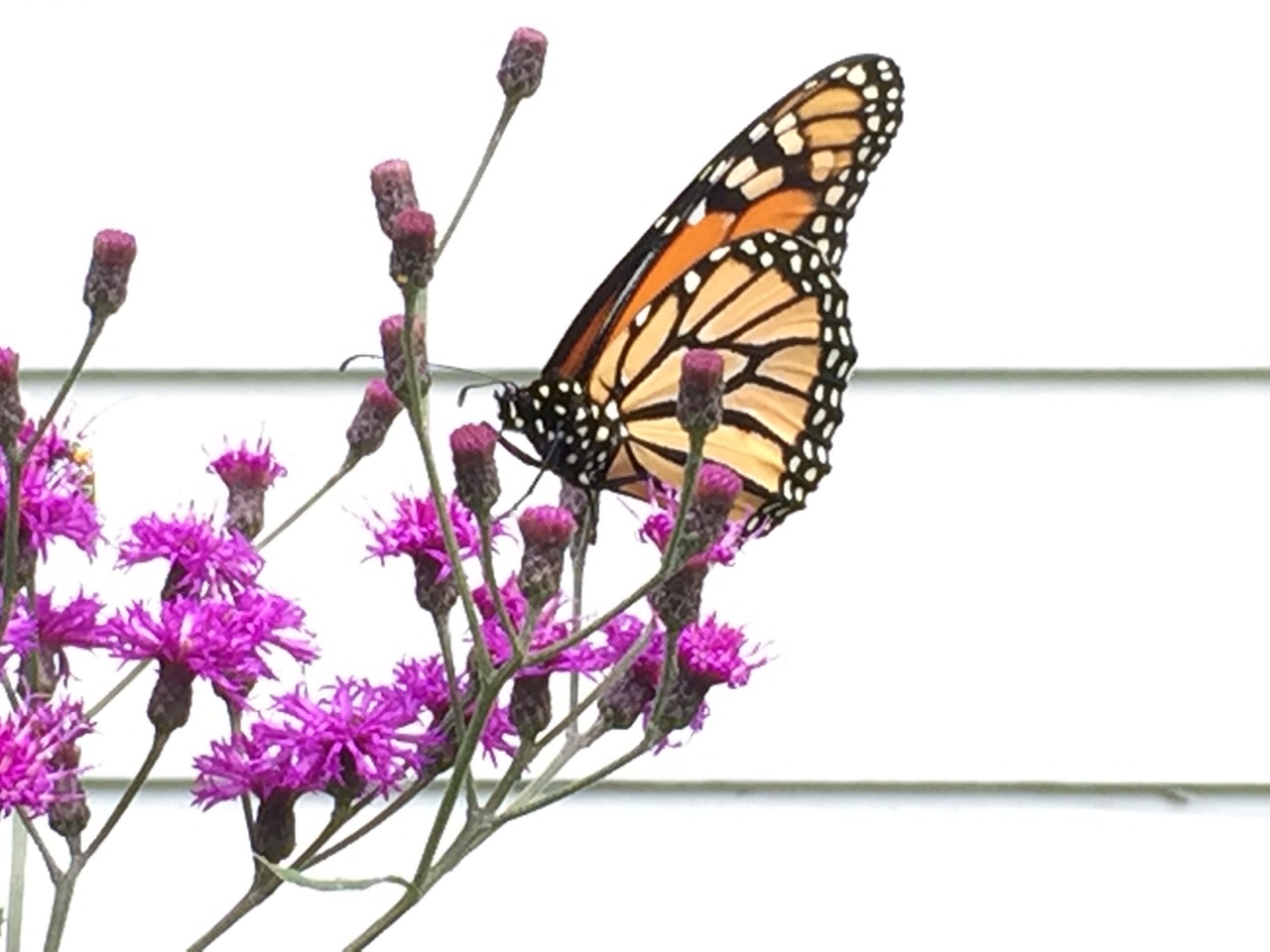by GardenLover | May 24, 2016 | Favorite Flora, Gardens to Drive
Pollinators and Plants for Pollinator-Friendly Gardens – Part 2
By Debra Knapke
Last week, I introduced you to the pollinators in Part 1. Now, it’s time for the pollinator plants . . .
Let’s start with general plant groups and work toward some specific choices in each group. This is a start. Any plant that is not wind-pollinated has an associated pollinator. Once you start exploring your plant options, the sky is the limit.
Aster family
Most members of this family provide a perfect perch for many insects. You will see an array of bugs, beetles, flies, bees, wasps and spiders crawling on the composite daisy flowers (Note: spiders are actually looking for their next meal; it’s a bug-eat-bug world out there!).
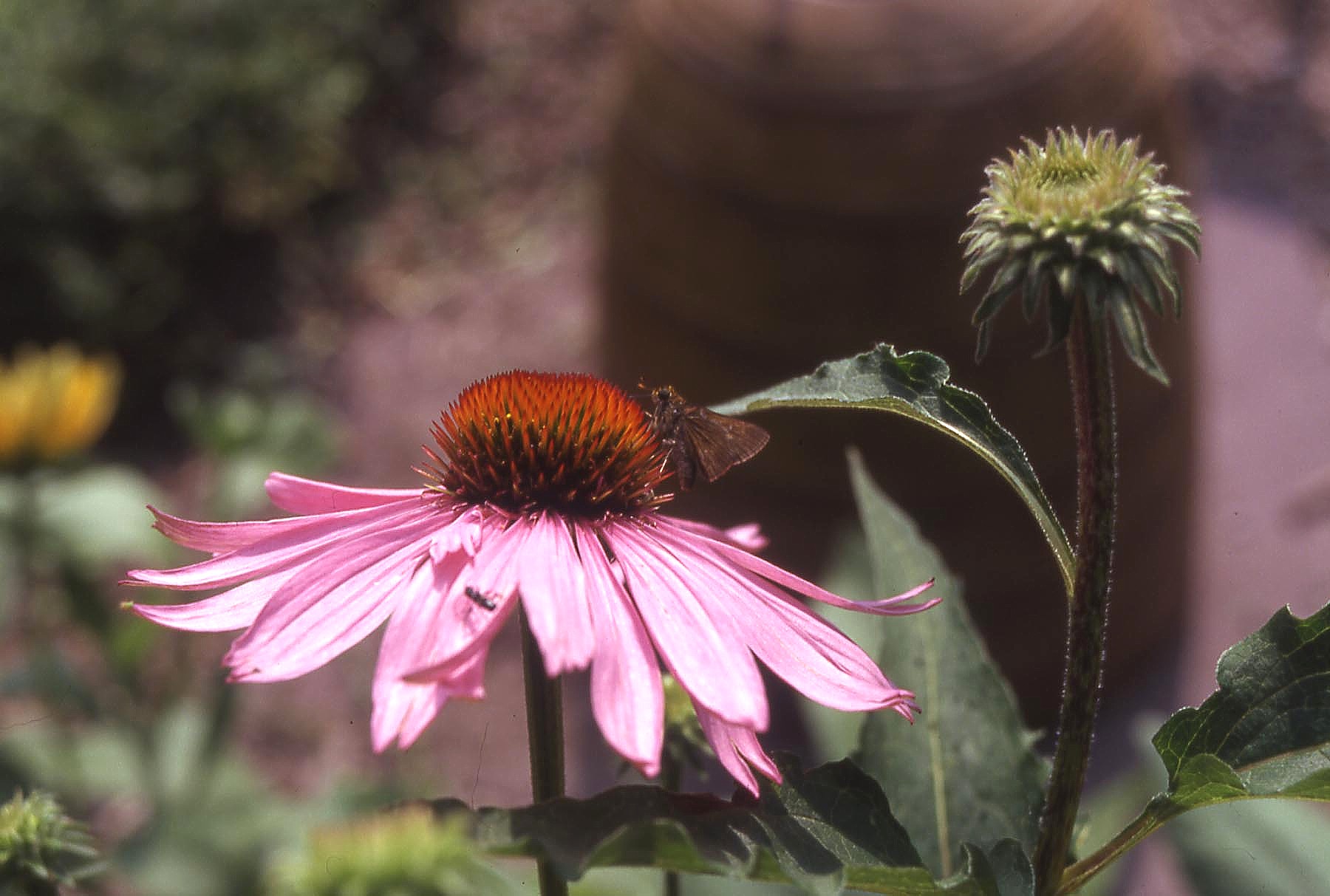
Echinacea purpurea — purple coneflower, plus a skipper
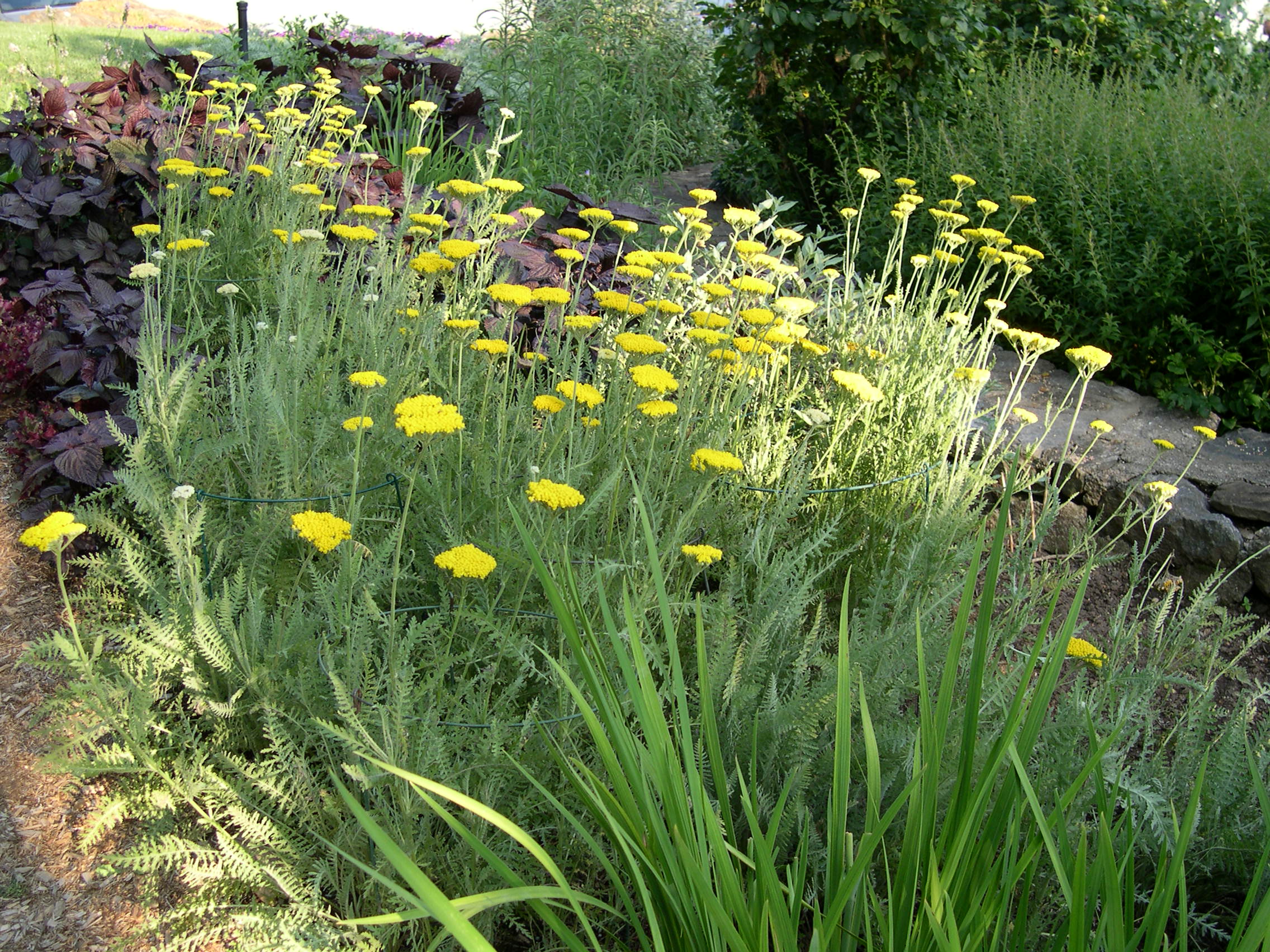
Achillea filipendulina – yarrow; a full sun plant!
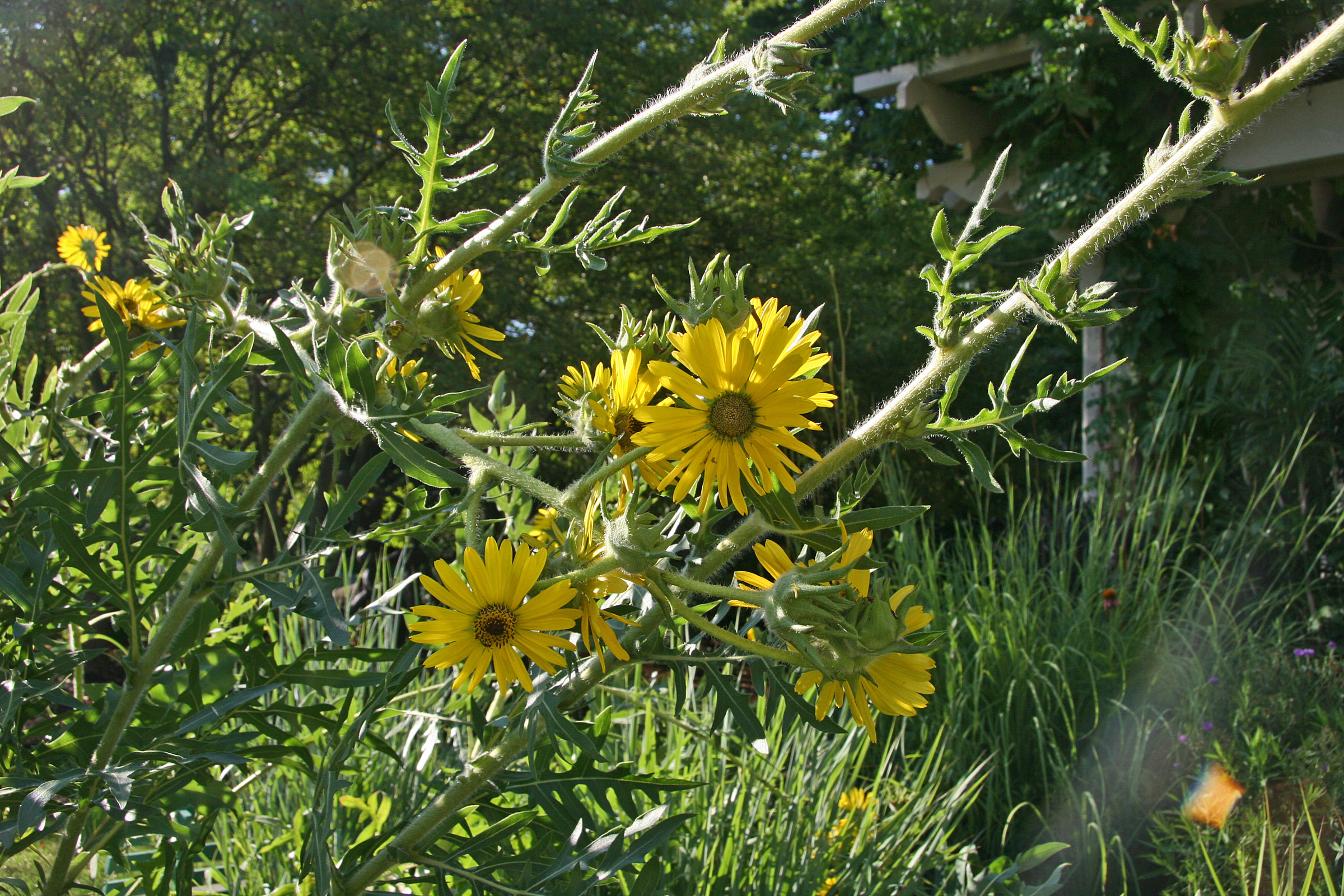
Silphium laciniatum – compass plant, a stately native
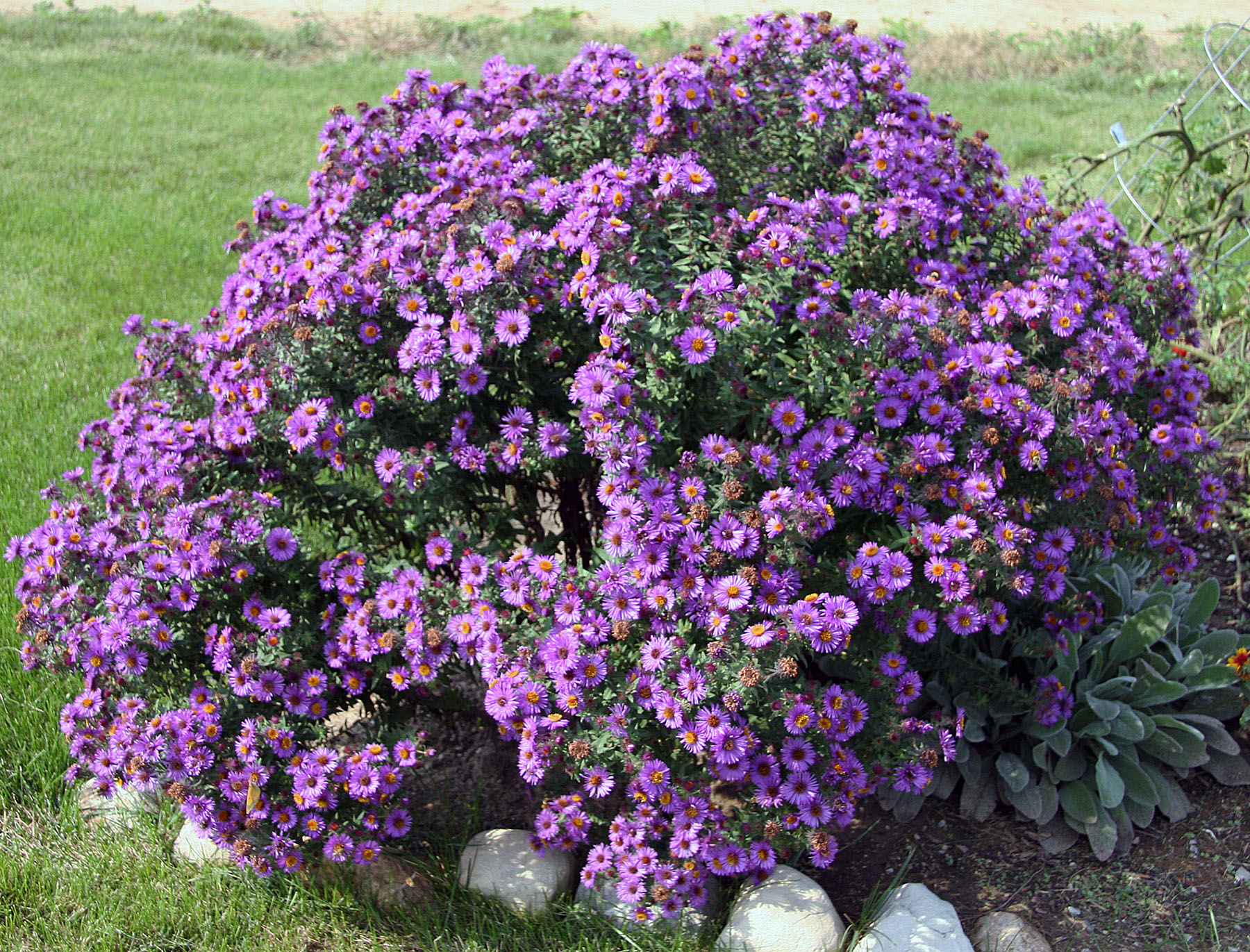
Symphyotrichum novae-angliae ‘Purple Dome’ – one of the last flowers for butterflies & other pollinators
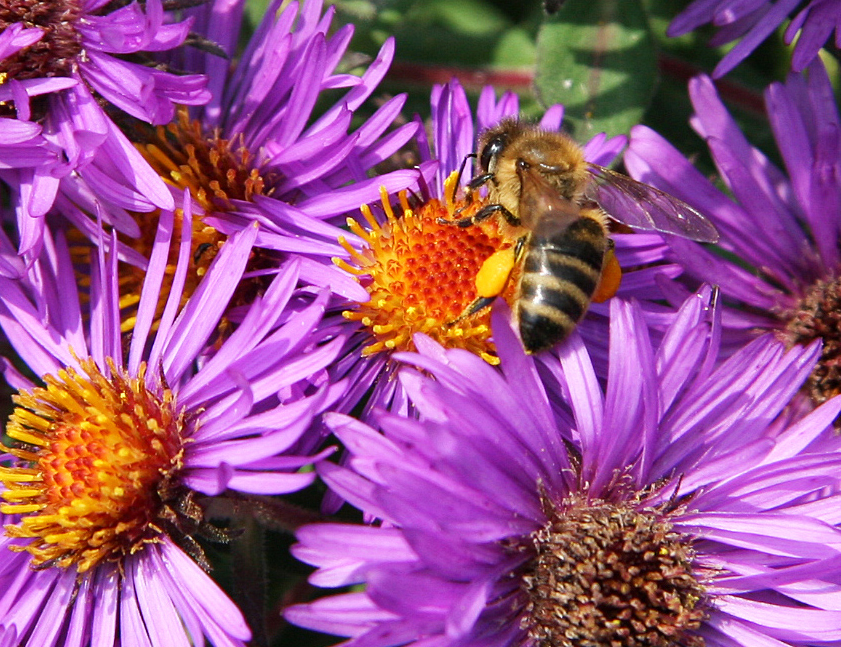
In October, a honeybee sips a late drink from a ‘Purple Dome.’
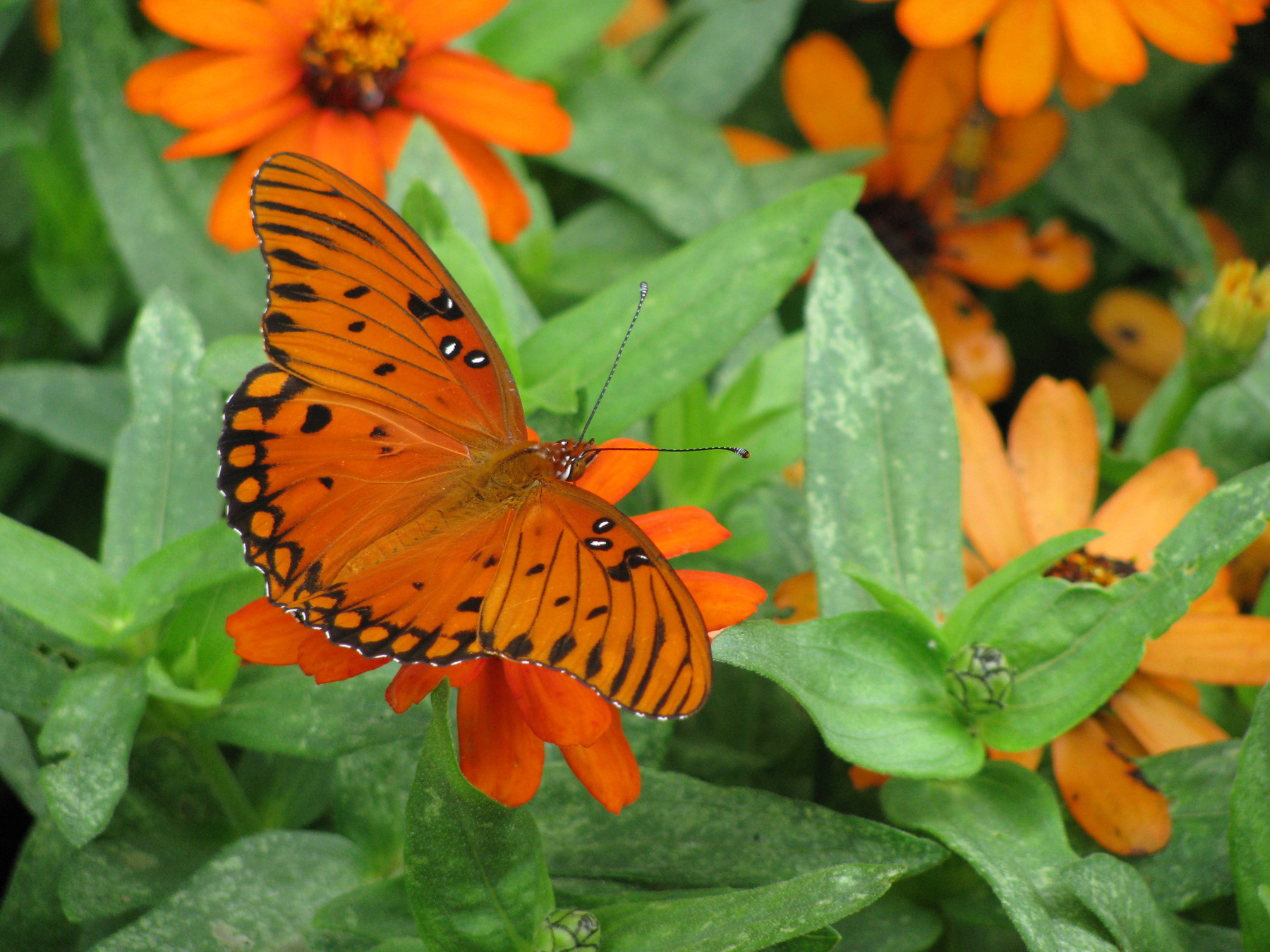
Zinnia angustifolia ‘Orange Profusion’– narrowleaf zinnia is an annual that is a pollinator magnet.
Bean/Pea family
Not only do the bumbles and other bees like the pea and bean family, but this group of plants has a lovely relationship with several species of bacteria that can fix gaseous nitrogen into a form that can be used by plants. Nitrogen is often the most limiting nutrient in built landscapes. This plant offers a way to fix the problem.
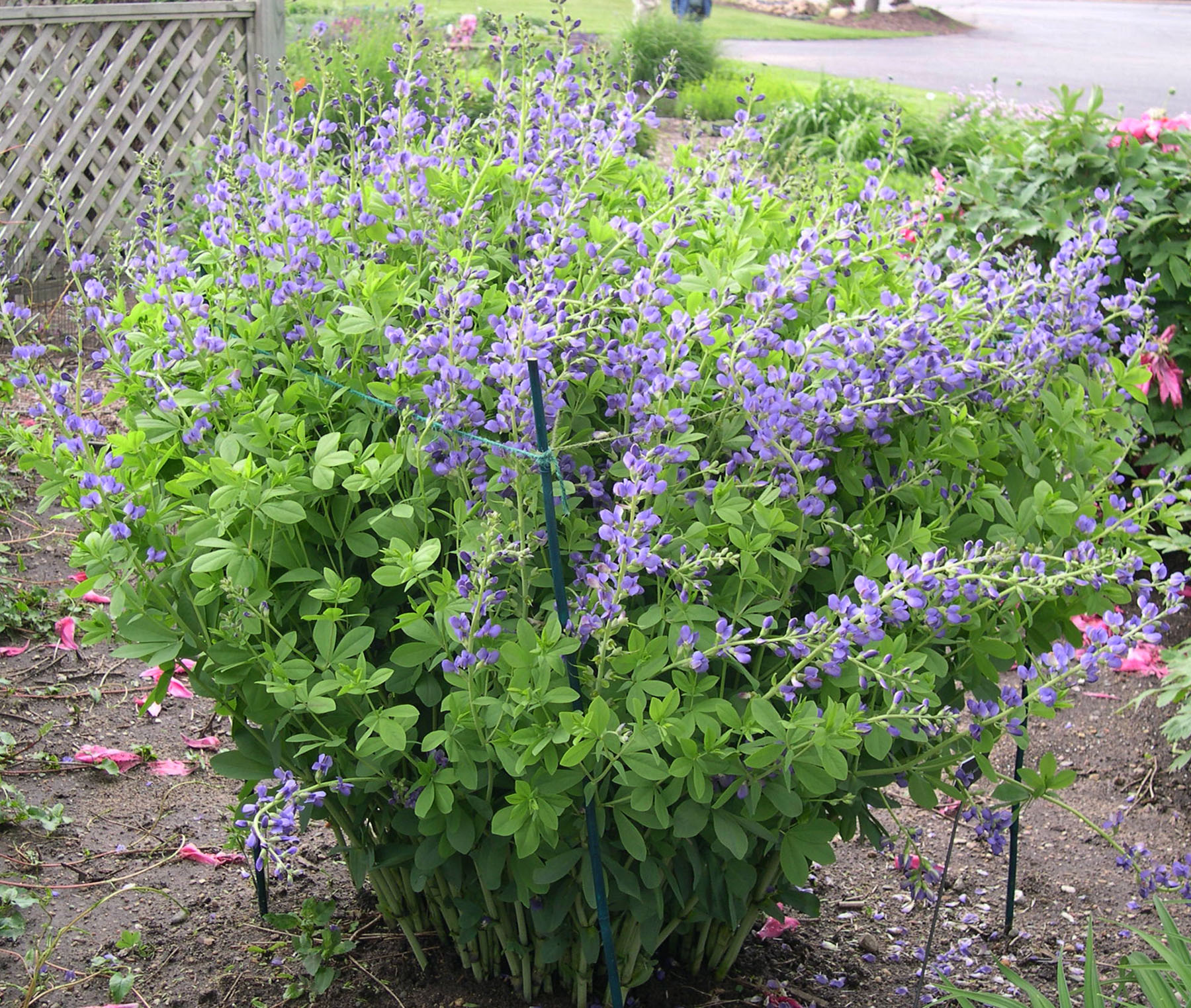
Baptisia australis – false indigo – is one of the most enduring plants in the garden.
Milkweed family
We have many species of milkweeds and butterflyweeds that are native to the Midwest. A recent study found that swamp milkweed (Asclepias incarnata) is the most likely to be chosen by the monarch butterfly as a larval host in the Midwest. The Mexican tropical milkweed – Asclepias curassavica – is the host plant for the monarch when it travels south for the winter.
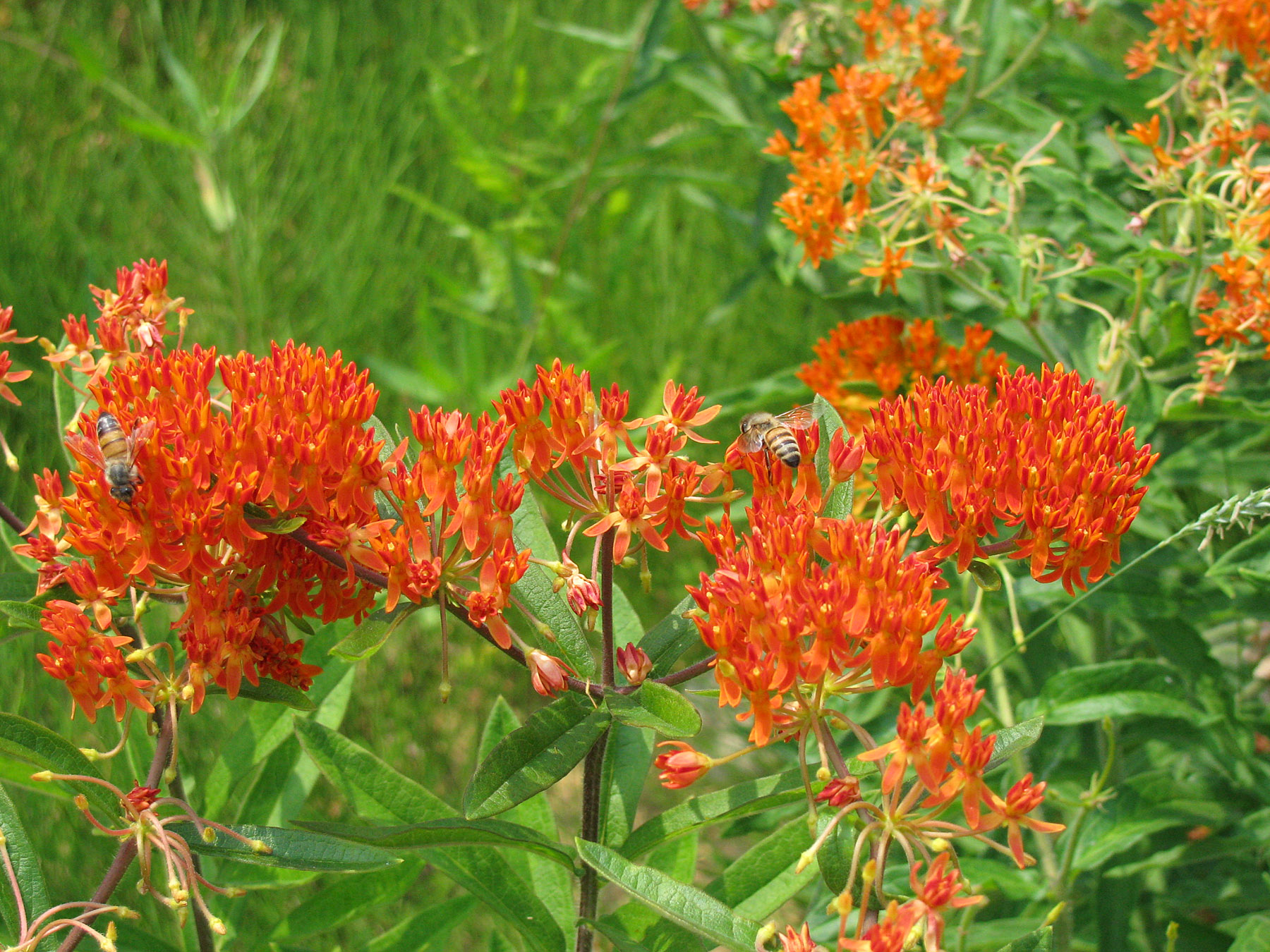
Asclepias tuberosa – butterflyweed for butterflies and bees
Mint family
Species in this herbal family should be in every garden. Many of the species are our favorite culinary herbs (basil, mint, oregano, rosemary, sage, thyme…) and many have anti-fungal, anti-bacterial attributes. The bilabiate flowers have long throats that lead to the nectaries. I have watched bumbles chew into the base of the flower because they could not enter the flower through the “front door.”
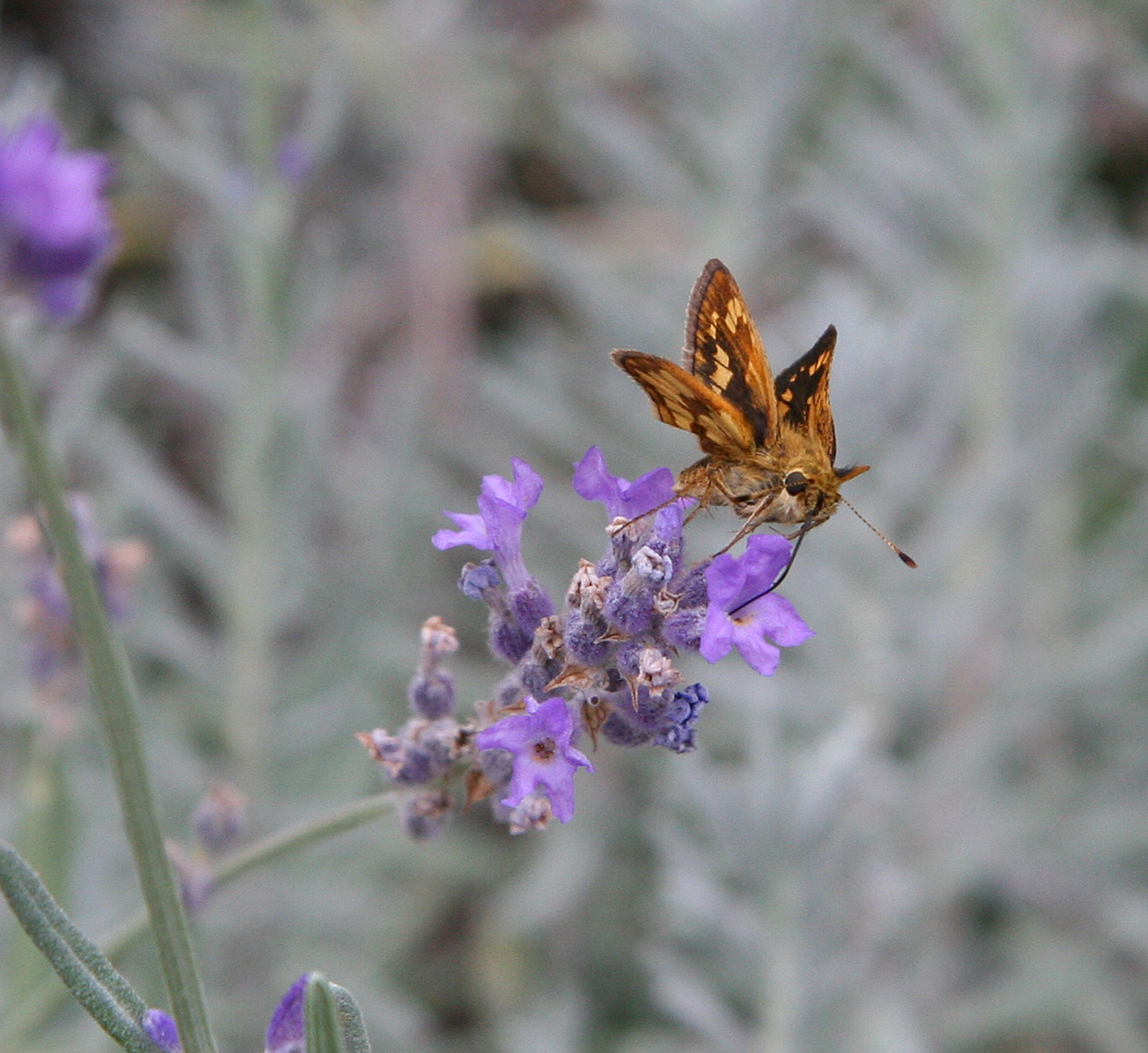
Lavandula angustifolia – English lavender with skipper
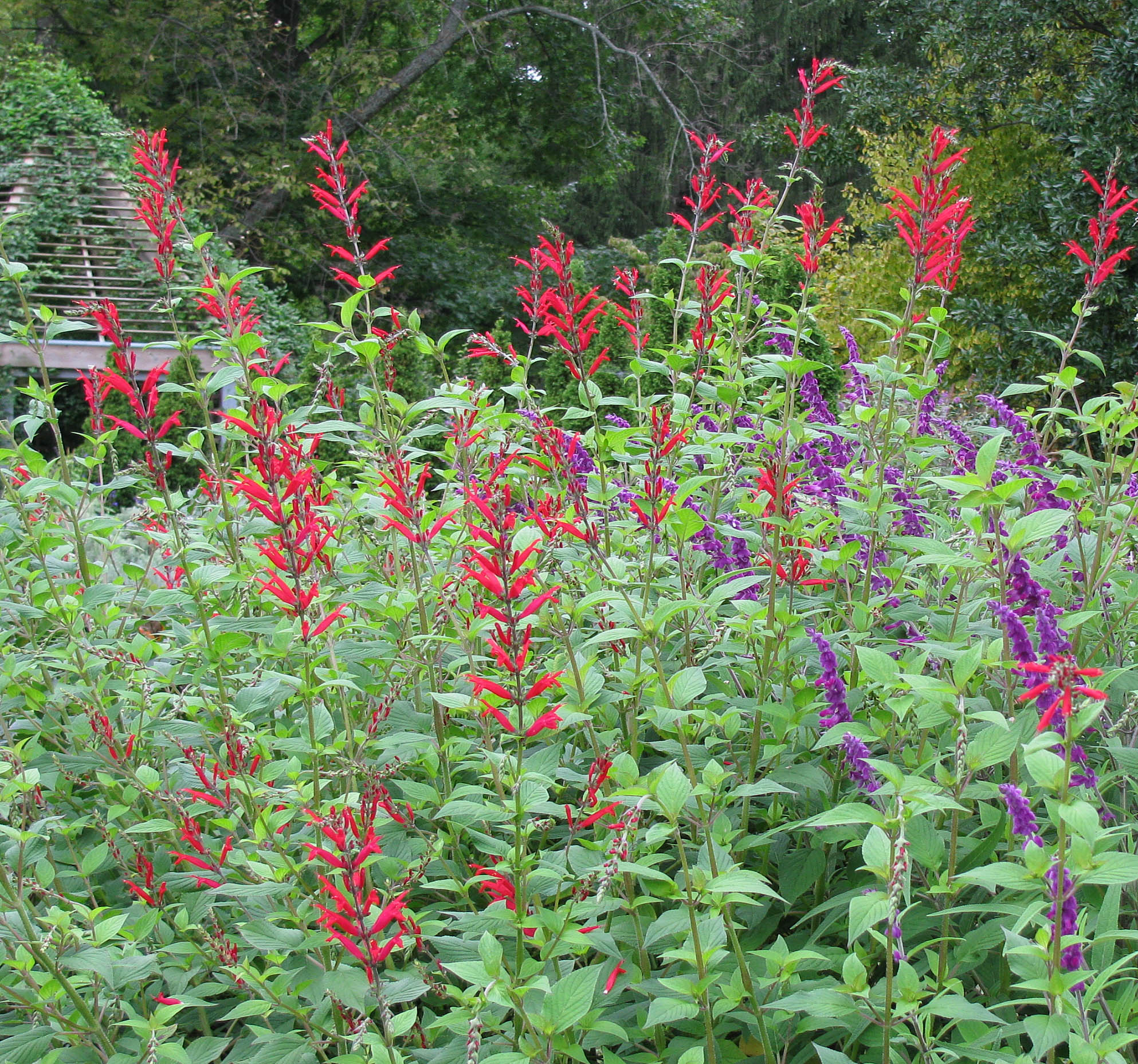
Salvia elegans (red, pineapple sage) and Salvia leucantha (blue, Mexican bush sage) are hummingbird dream-plants. I have been “strafed” in the garden by hummingbirds when I have stood in the flight path to the flowers.
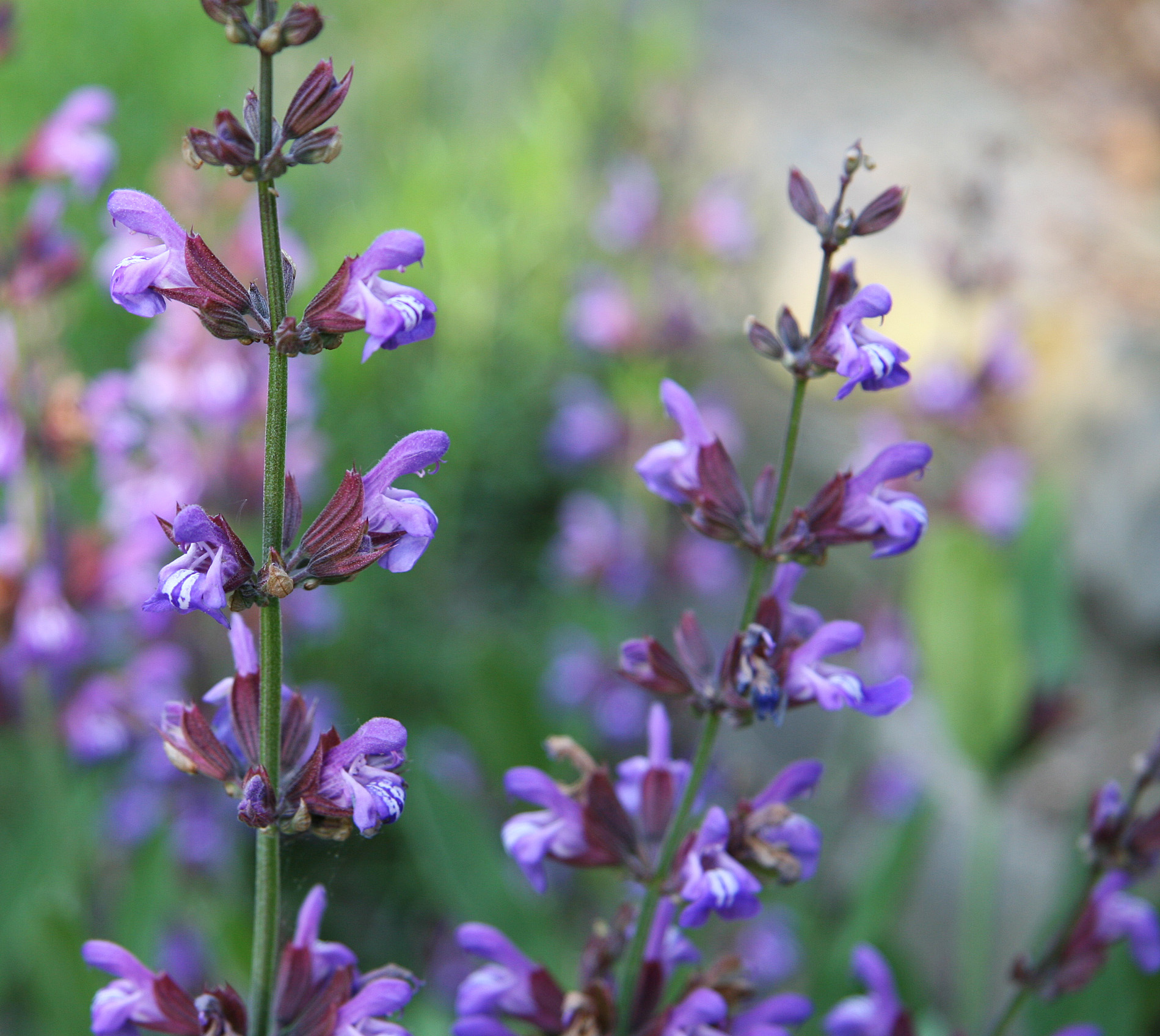
Salvia officinalis – common sage which is tasty and beautiful.
Parsley/Celery family
Another family that contains many herbal plants and some of our most potent poisons, not only feeds pollinators but also attracts the “good” bugs that eat the “bad” bugs – at least from the human perspective.
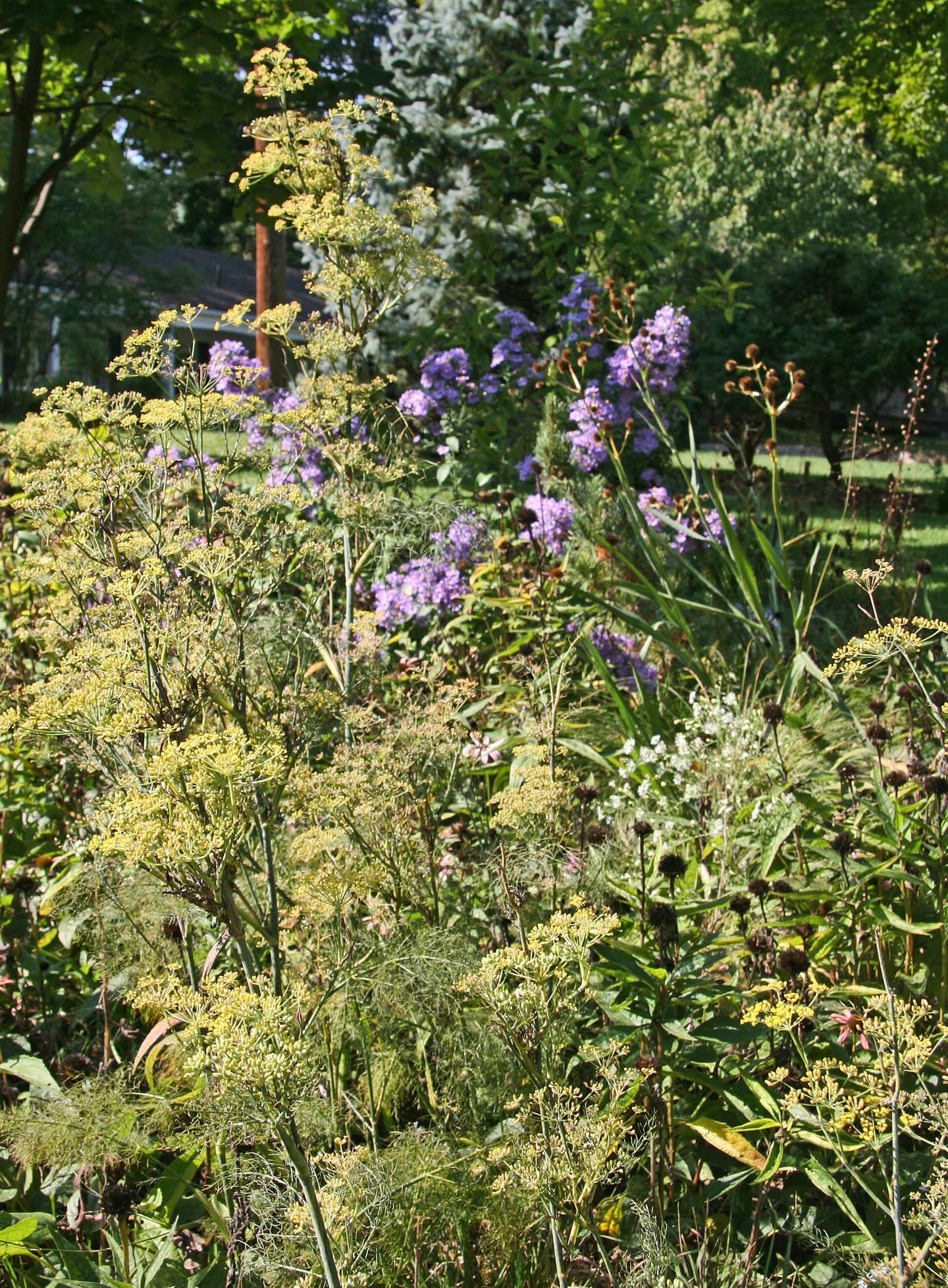
Foeniculum vulgare ‘Purpureum’ – bronze fennel is another multi-tasker in the garden. It is a culinary and medicinal plant. It hosts a variety of butterfly larvae while offering pollen and nectar to many insects.
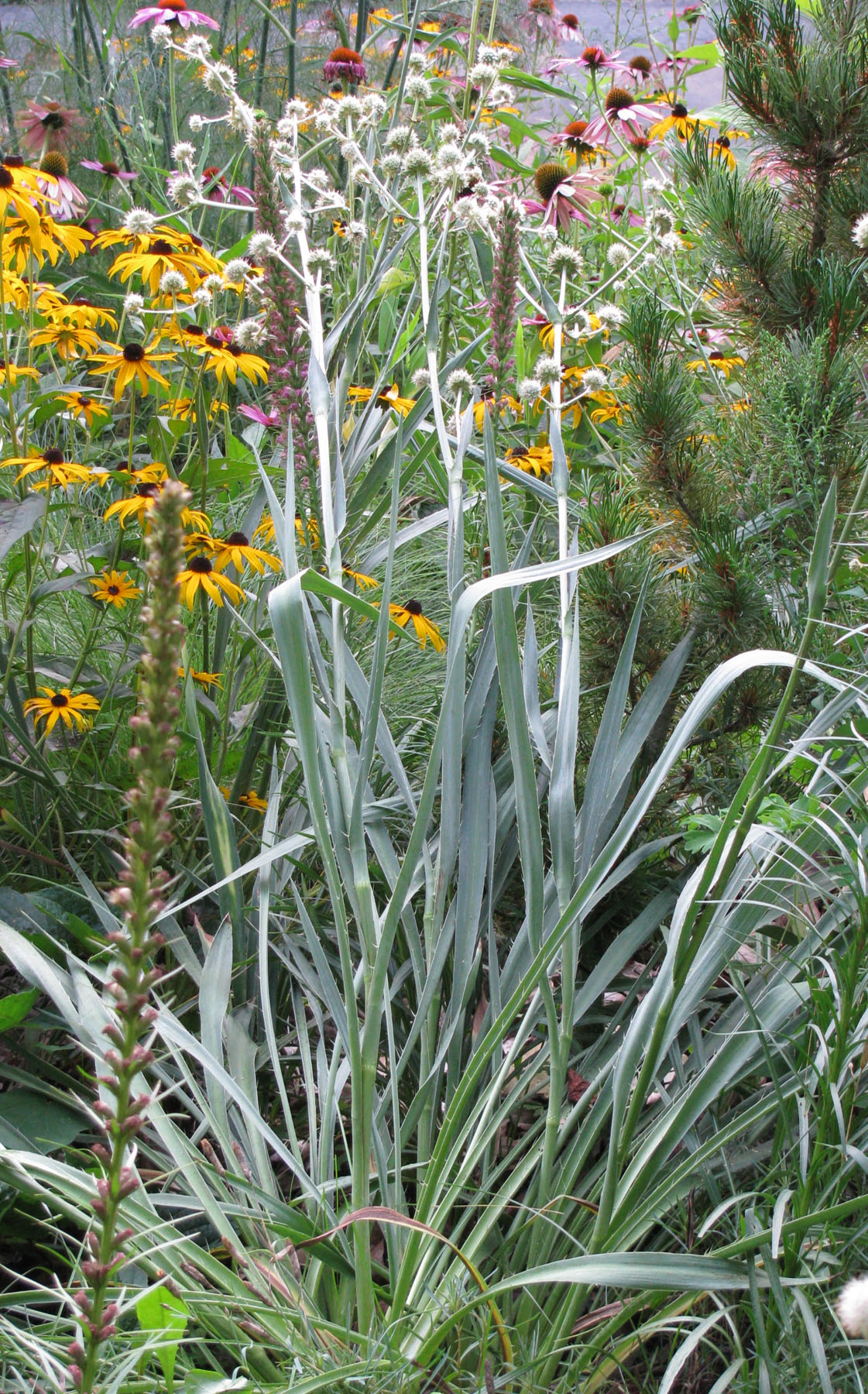
Eryngium yuccifolium – rattlesnake master – a tea made from its roots is reputed to be an antidote for snake venom; not sure I would trust that. Its flowers attract a myriad of insects.
All of the above are herbaceous perennials, but many trees and shrubs provide food for pollinators, too. Below is a bumble on her way to becoming drunk from the flowers of a littleleaf linden tree – Tilia cordata.
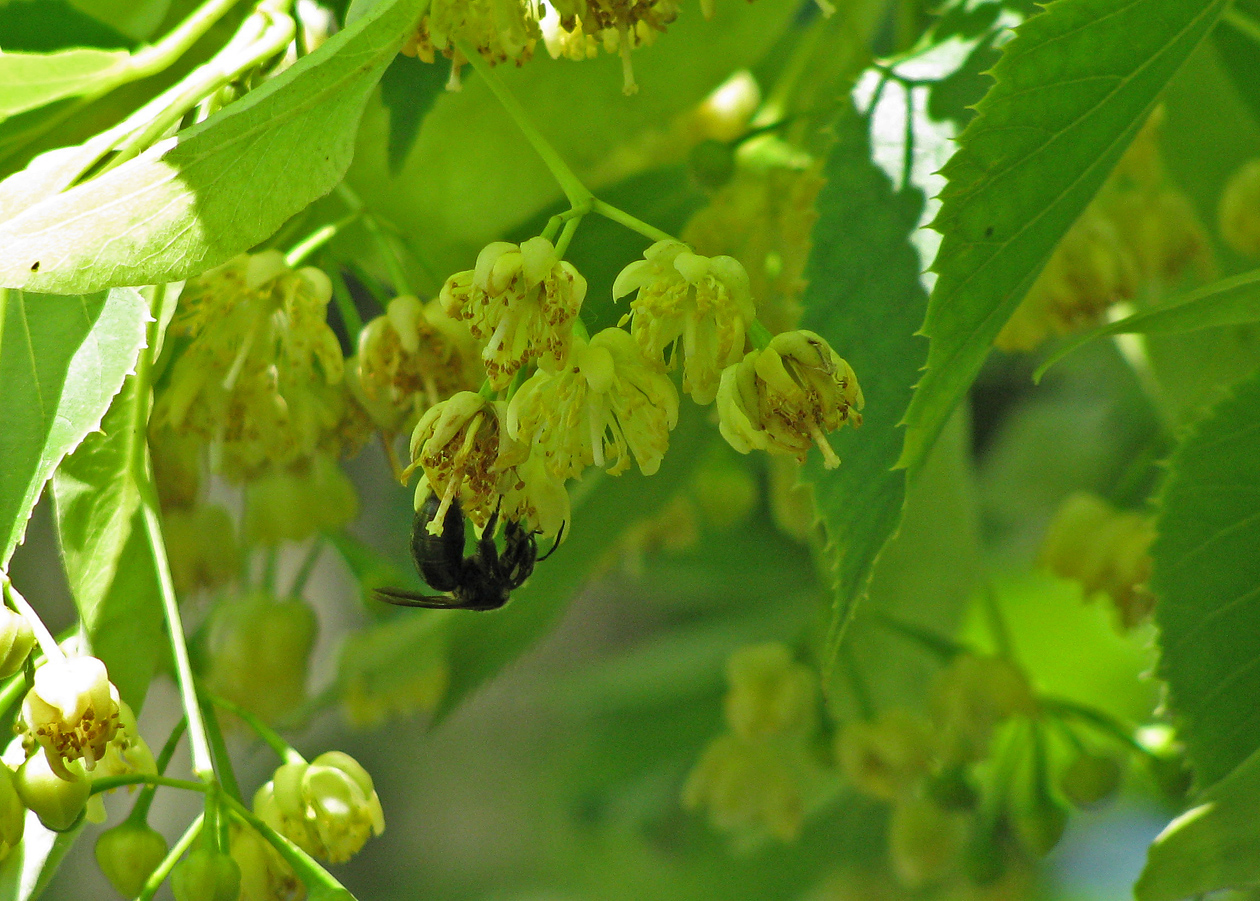
Wishing you awe in the garden!!!
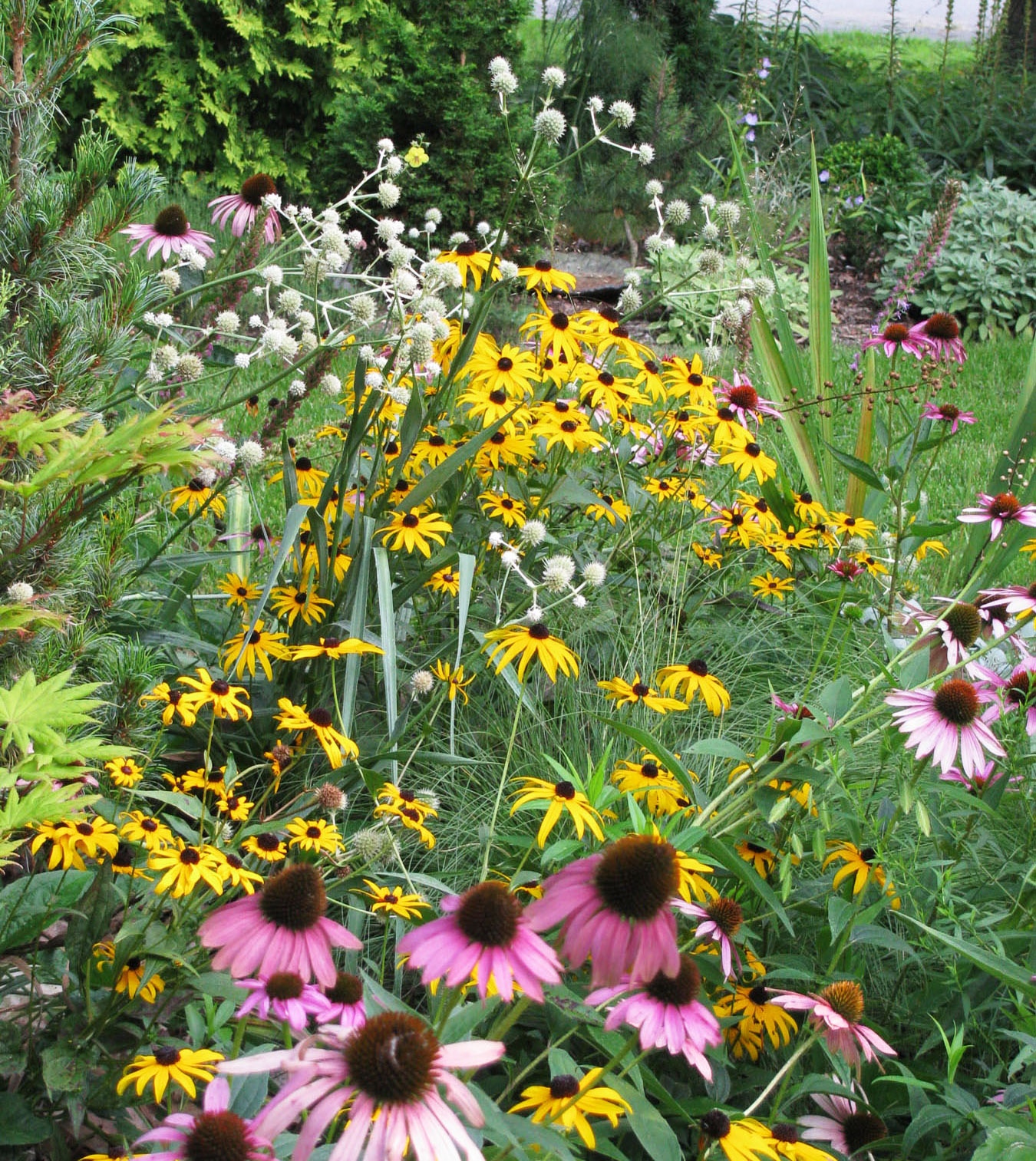
by GardenLover | May 18, 2016 | Favorite Flora
Pollinators and Plants for Pollinator-Friendly Gardens – Part 1
By Debra Knapke
Pollinators and plants: a beautiful symbiotic relationship that is usually mutually beneficial. A plant gets to propagate itself, while the pollinator gets food. We’ve always known that these relationships exist, but there are threats that are interfering with plant and pollinator interactions. Global Climate Change, habitat reduction, and pesticide use are just a few.
We can be part of the solution. Resist using pesticides in the garden and let the “good” bugs have a chance to eat the “bad” bugs. Buy more plants and create pollinator habitats in your garden.
In order to choose which plants, you need to know who you are inviting in.
Meet the pollinators:
Bees
In the June/July 2016 National Wildlife magazine it was reported that bees contribute $300 billion toward global agricultural systems. We are fortunate to have a diverse group of native bees in the Midwest. If you are interested in learning more about identification and good landscape practices for supporting our native bees, check out the resources at the
Ohio State University Bee Lab website.
The non-native, but very important honeybee will benefit from the same plants and practices that you would use for our native bees. This is a case where native/non-native is a non-issue. Both native and non-native bees are essential to our well-being.
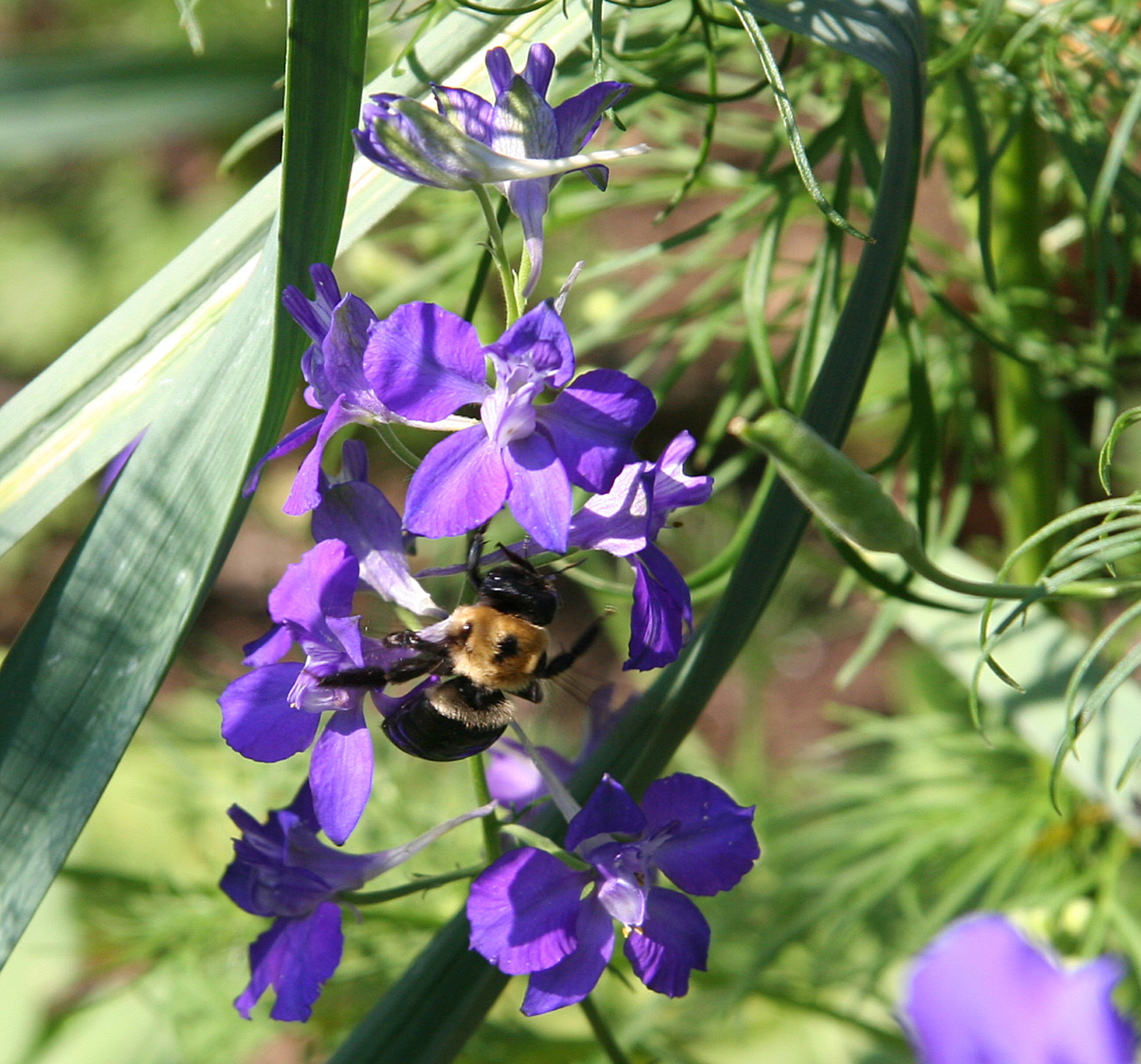
Bumblebee on annual larkspur
Flies
Some of the bees you see are actually flies; often called Hover flies or Syrphid flies. A bonus of this pollinator group is that the larval stage is a voracious eater of aphids.
How can you tell bees and flies apart? A quick way is to note the number of wings: bees have two pairs; flies have one pair.
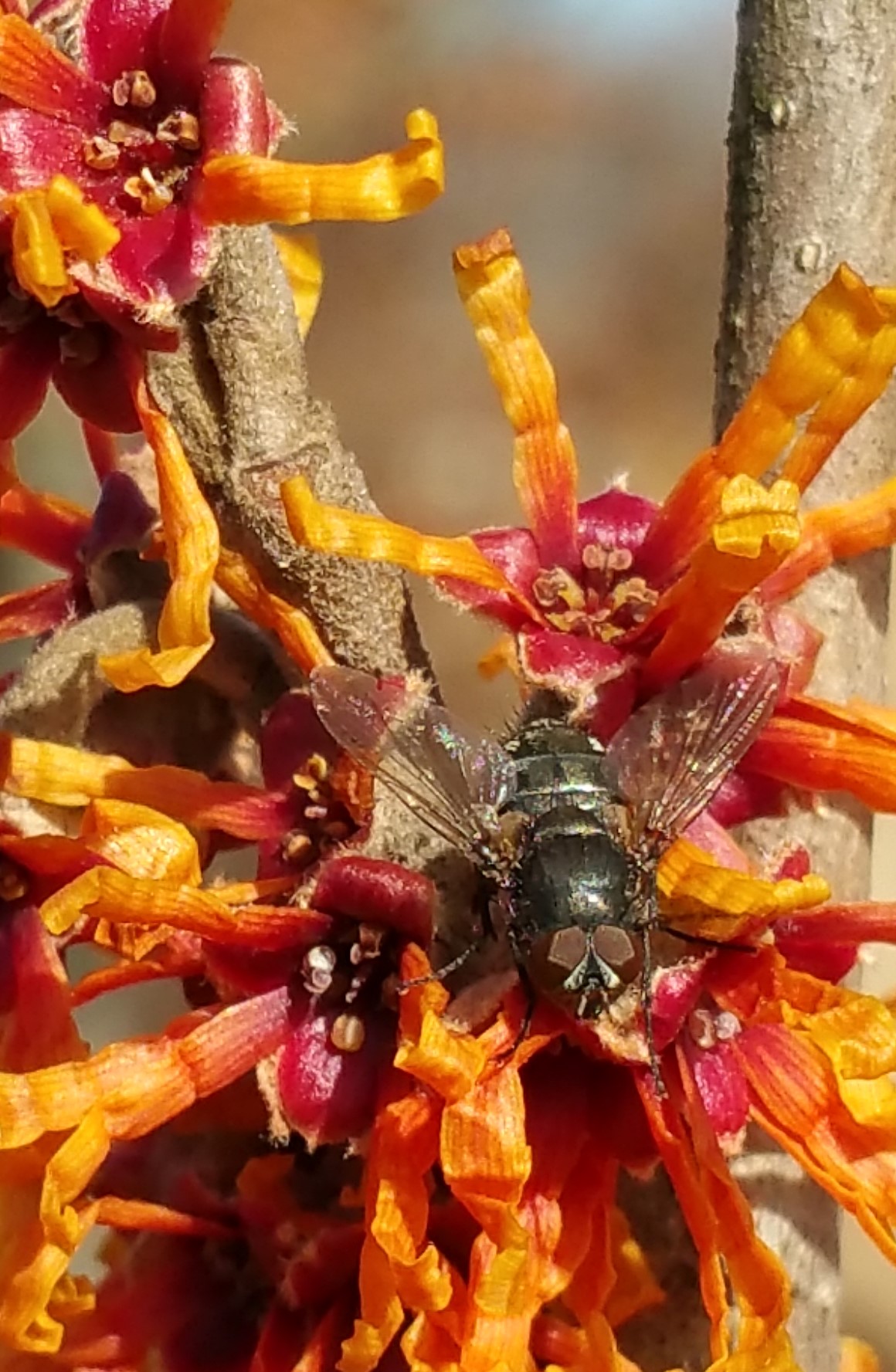
Fly on witch hazel
Sometimes we do not give flies their due in the insect world. I would like to offer this thought: without a small tropical fly, we would not have chocolate.
Hummingbirds
This flying jewel is particularly fond of deep-throated flowers. They typically live in the Midwest from the beginning of April to the beginning of October. On their quest for nectar, they also transfer pollen between flowers.
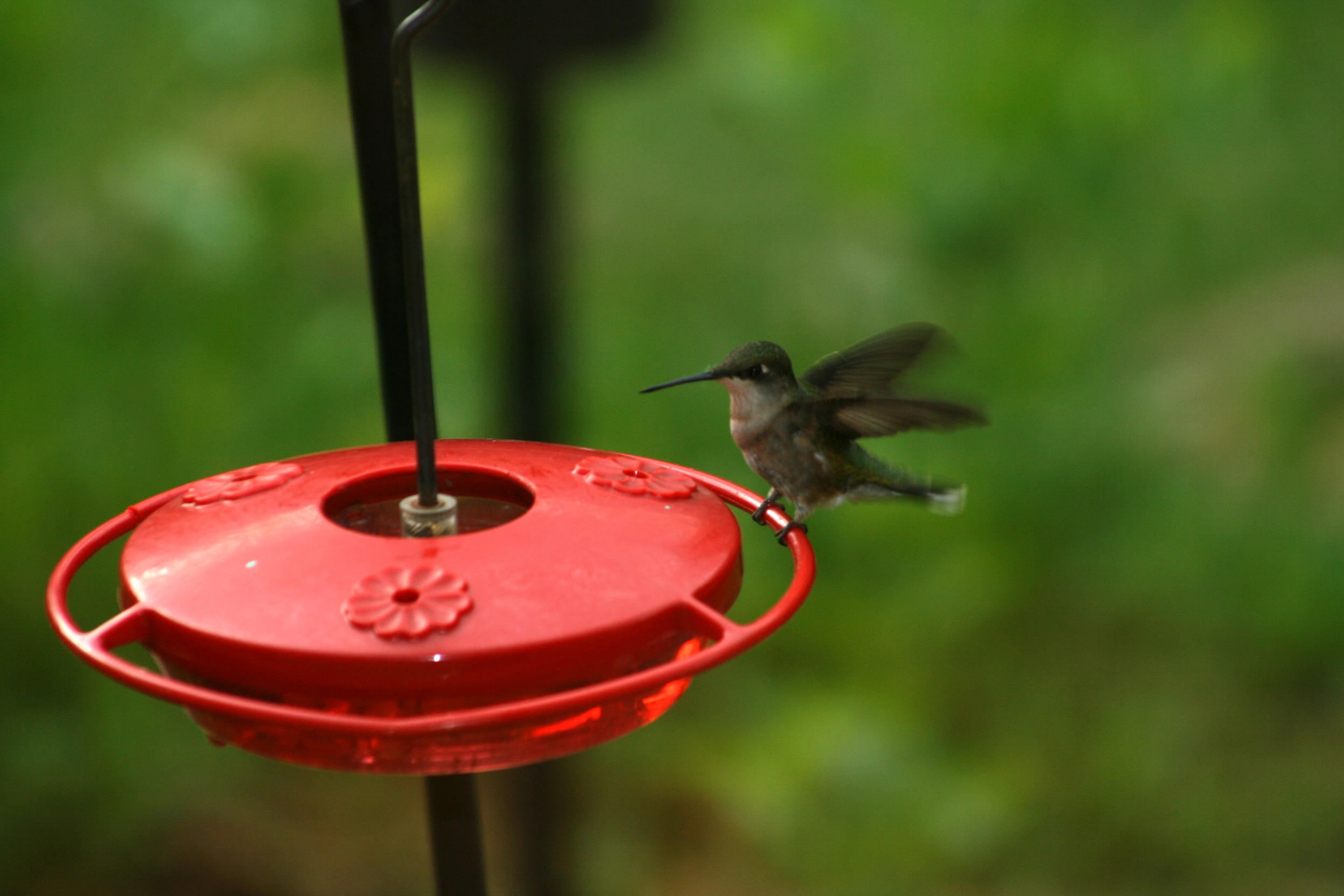
Butterflies, Skippers and Moths
Monarchs have been the poster child for creating habitat for pollinators, but there are so many other butterflies, skippers and moths that benefit from a ready source of nectar and their required larval plants. Some pollinators are night visitors. A moon garden filled with night-blooming white and pale yellow flowered species offers food to night-flying moths.
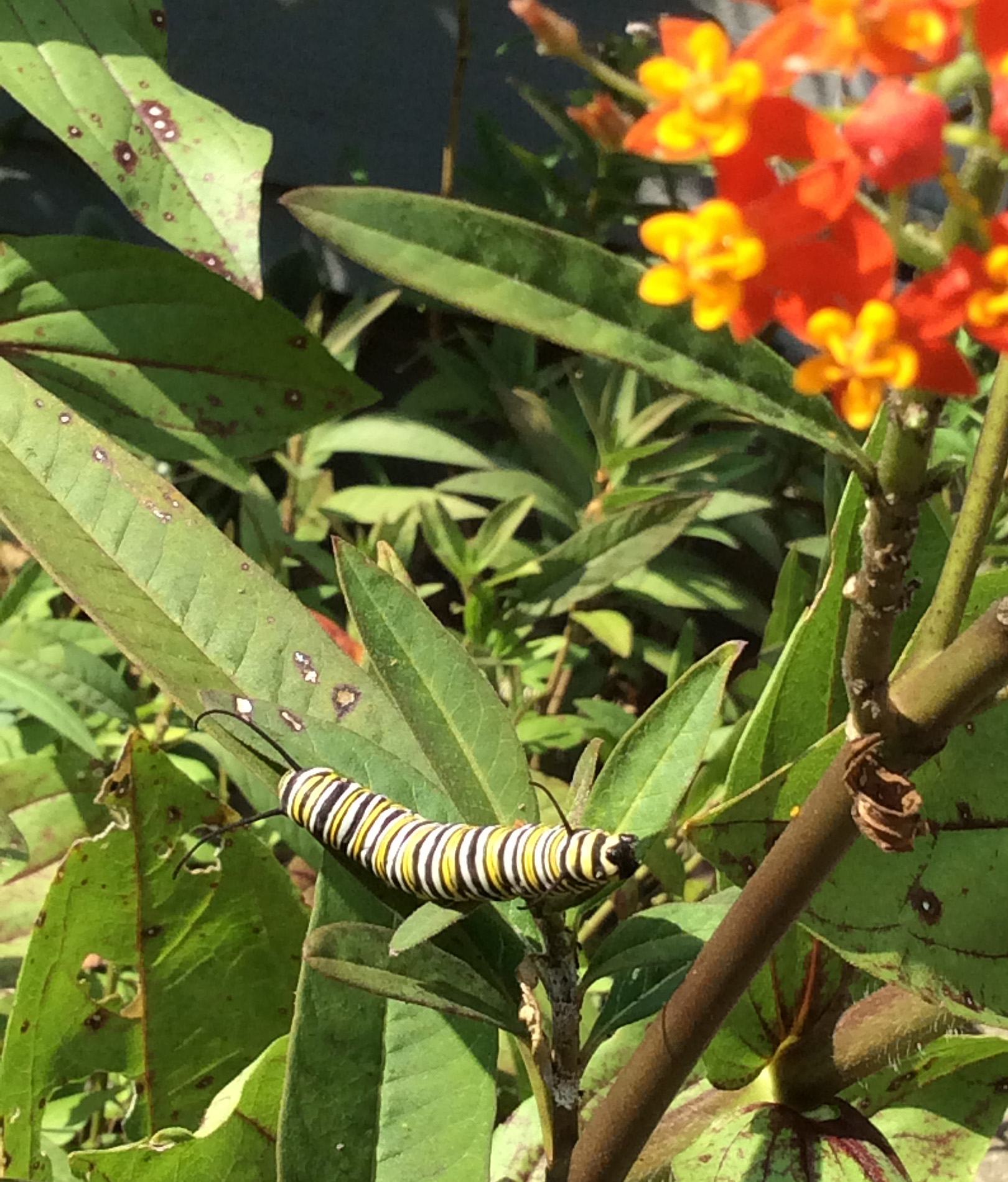
Asclepias curassavica — tropical milkweed — with monarch larvae
There are other pollinators, but this is not meant to be an exhaustive treatise. It is an introduction. Hopefully you will be intrigued enough to do some research of your own.
On Friday, look for my follow-up post on pollinators’ favorite plants.
by GardenLover | Apr 22, 2016 | Gardens to Drive, Good eats, Trendspotting
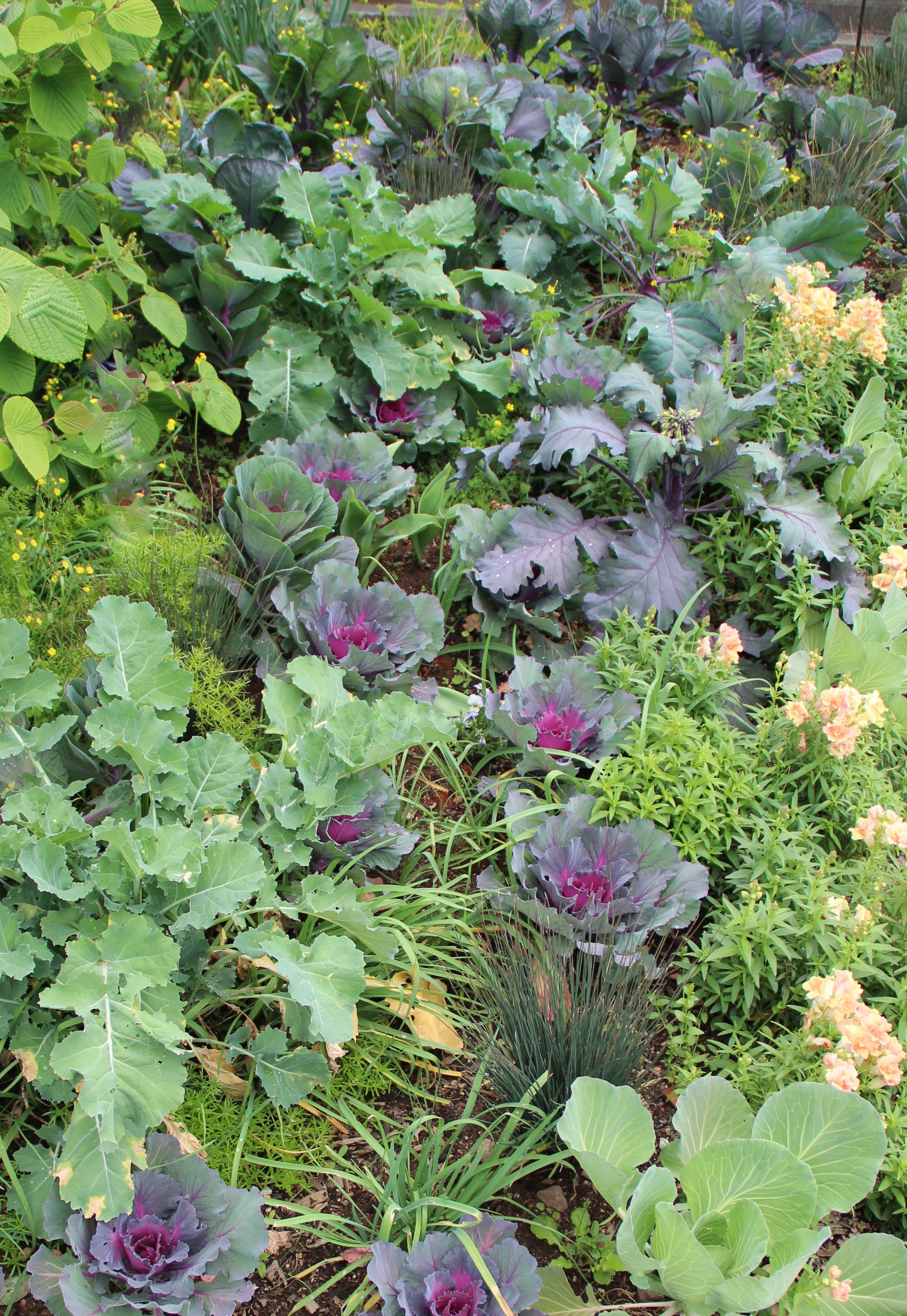
By Teresa Woodard
Yes, I’ve planted flowering kale to add fall color to borders and containers, but I had no idea how amazing brassicas — kales, cabbages, turnips, kohlrabi and mustards — could look in the landscape until last week when I visited the spring display gardens at the Riverbanks Zoo & Botanical Garden in Columbia, SC. Brassicas are best grown in cool seasons – spring and fall, so consider purchasing some plants to add this spring or planting some seeds in August for a fall show. Fellow blogger Deb Knapke will follow up this post with another on growing tips.
The Riverbanks’ spring display garden offers plenty of inspiration. Just check out these fanciful and edible leaves and clever planting combinations.
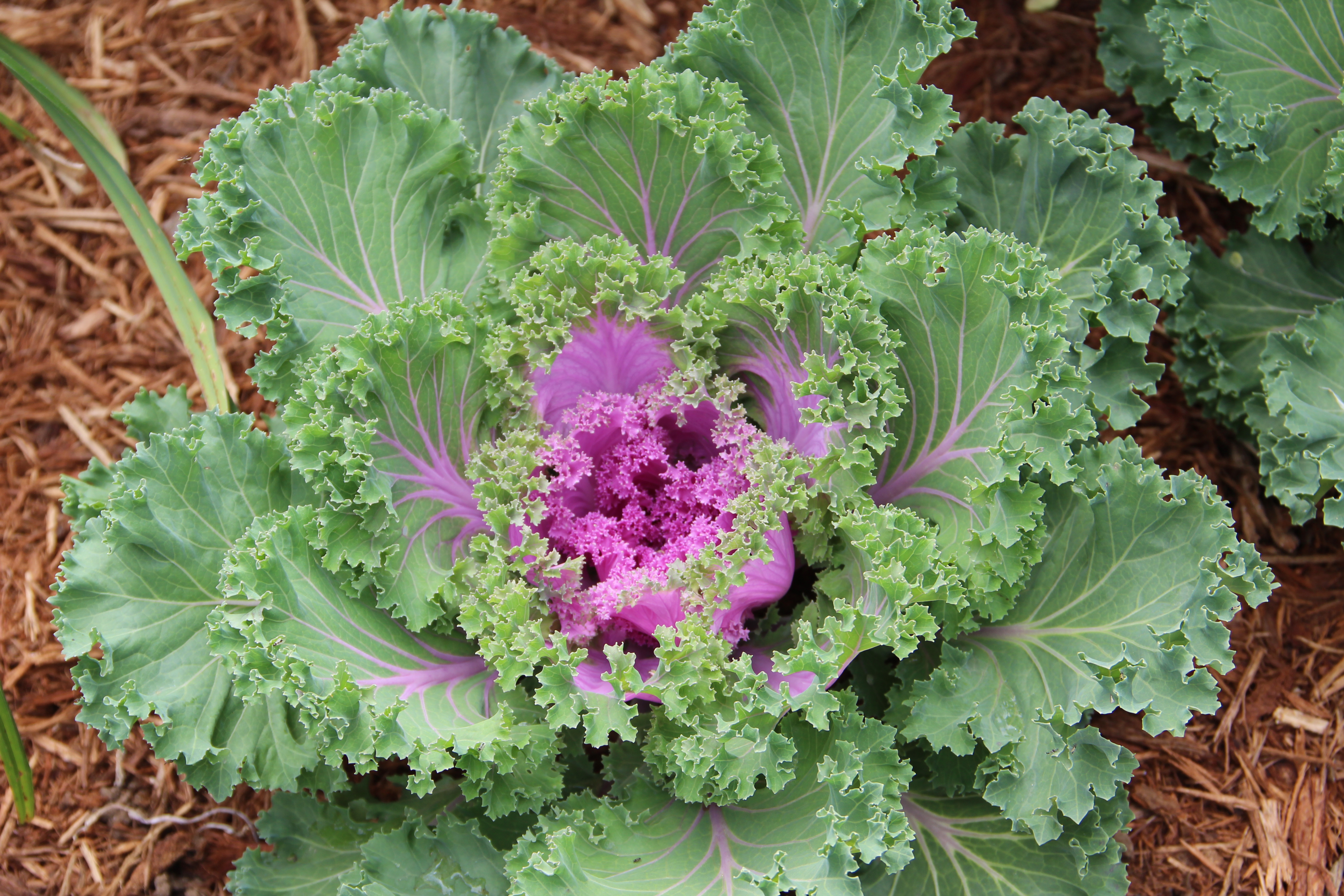
Ornamental Kale: Brassica oleracea (Acephala Group) ‘Peacock Red’
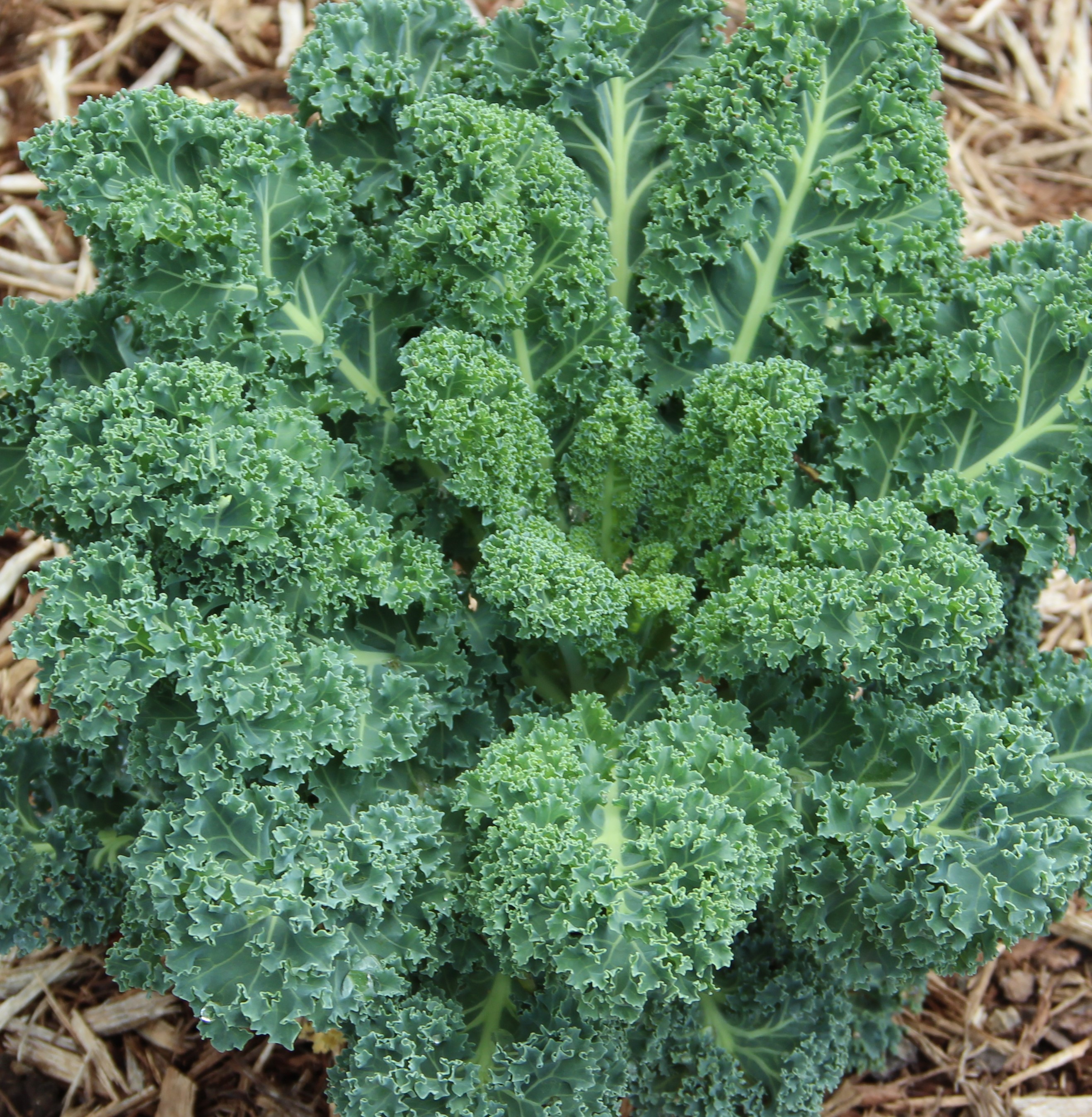
Curly Kale: Brassica oleracea (Acephala Group) ‘Starbor’
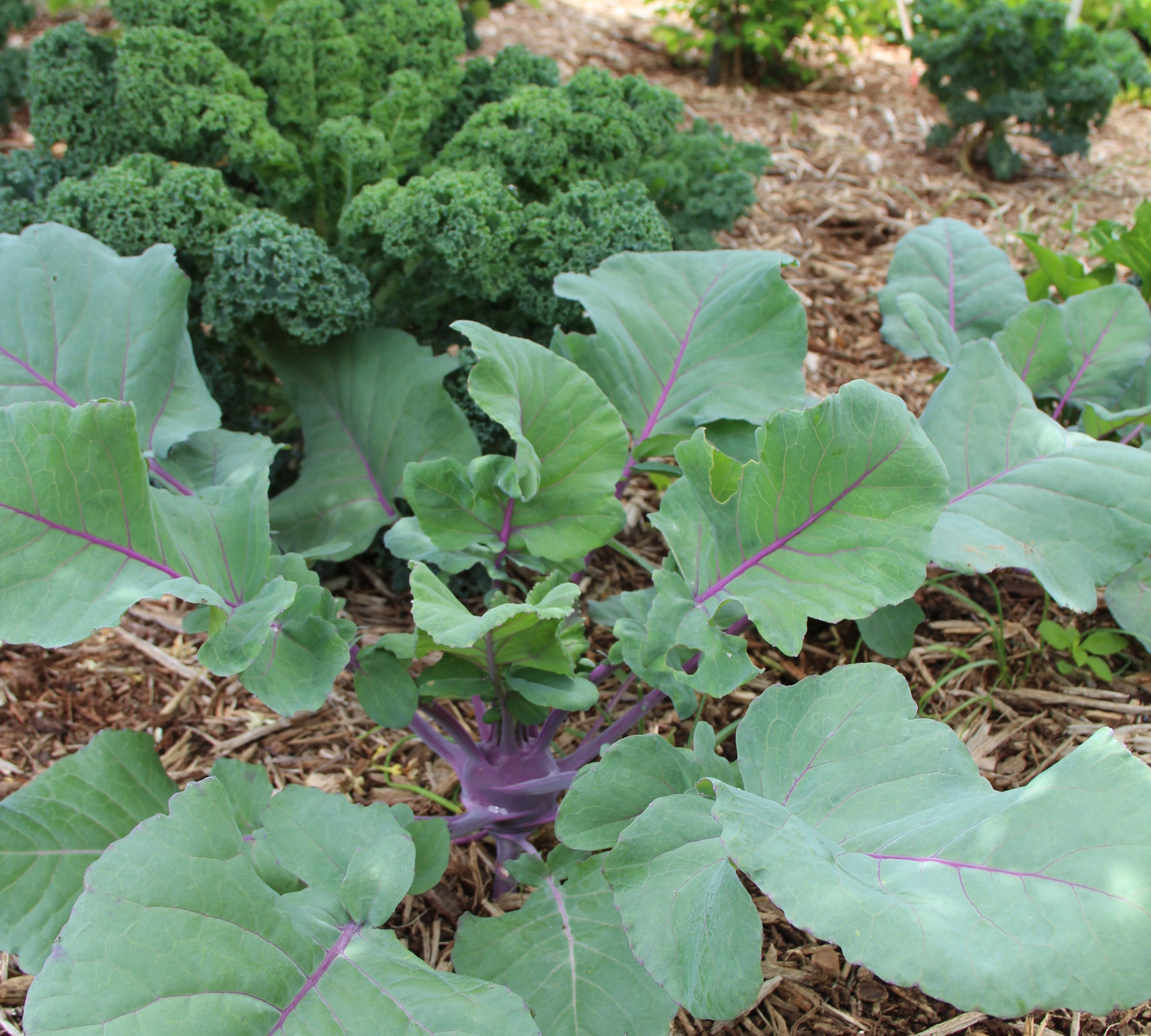
Kohlrabi: Brassica oleracea (Gongylodes Group) ‘Azur-Star’
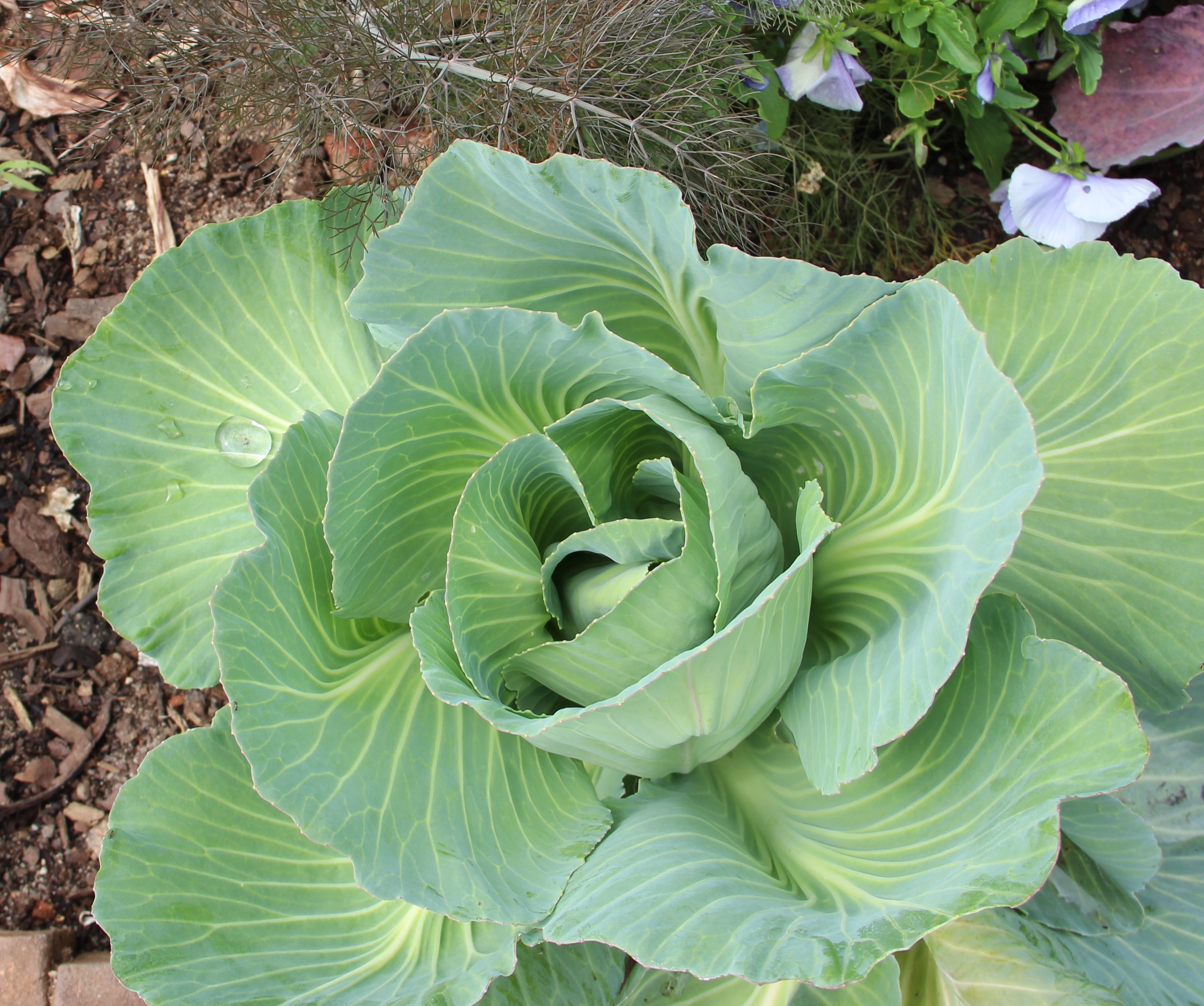
Cabbage: Brassica oleracea ‘OS Cross’
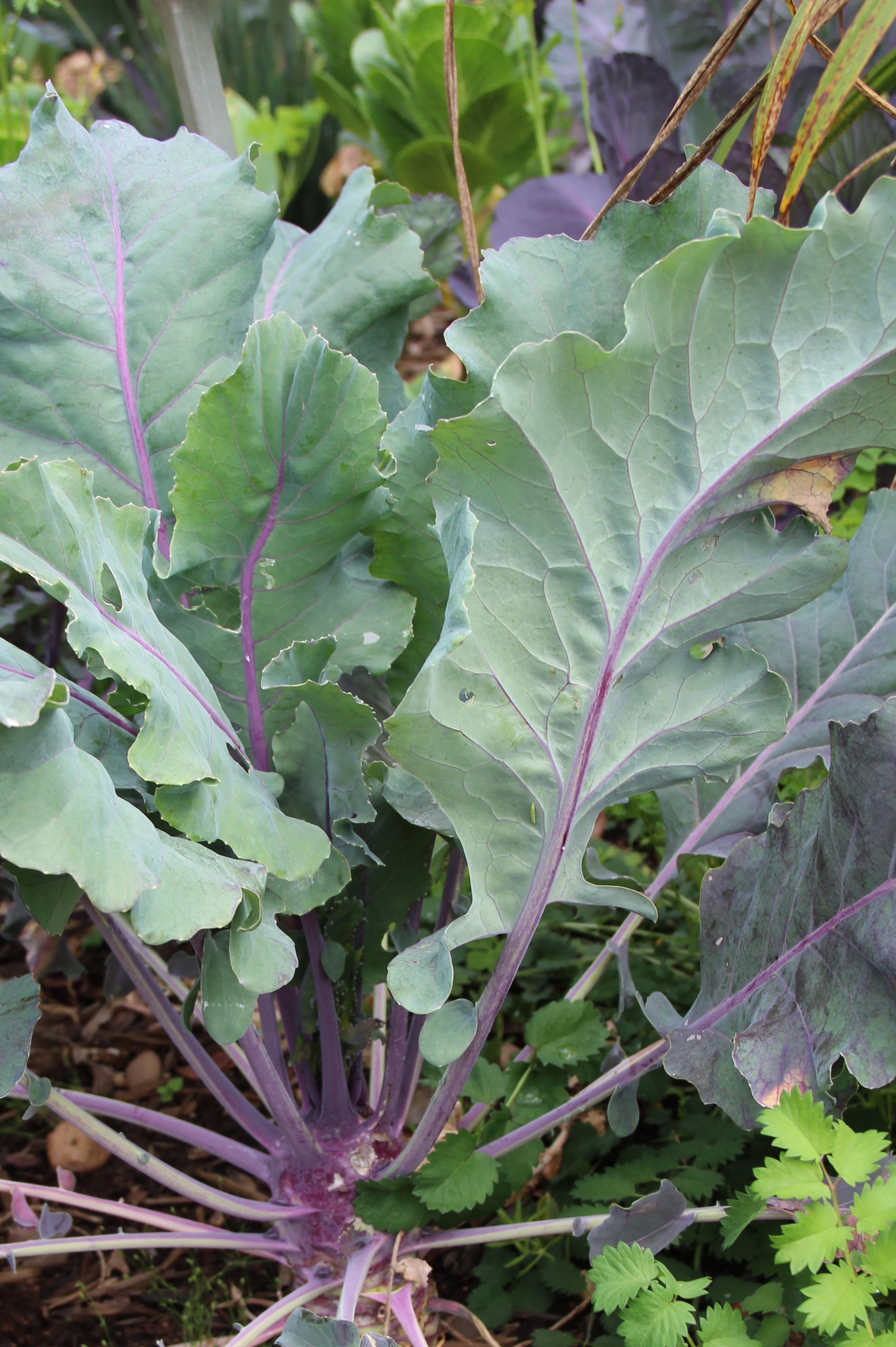
Kohlrabi: Brassica oleracea (Gongylodes Group) ‘Delicacy Purple’
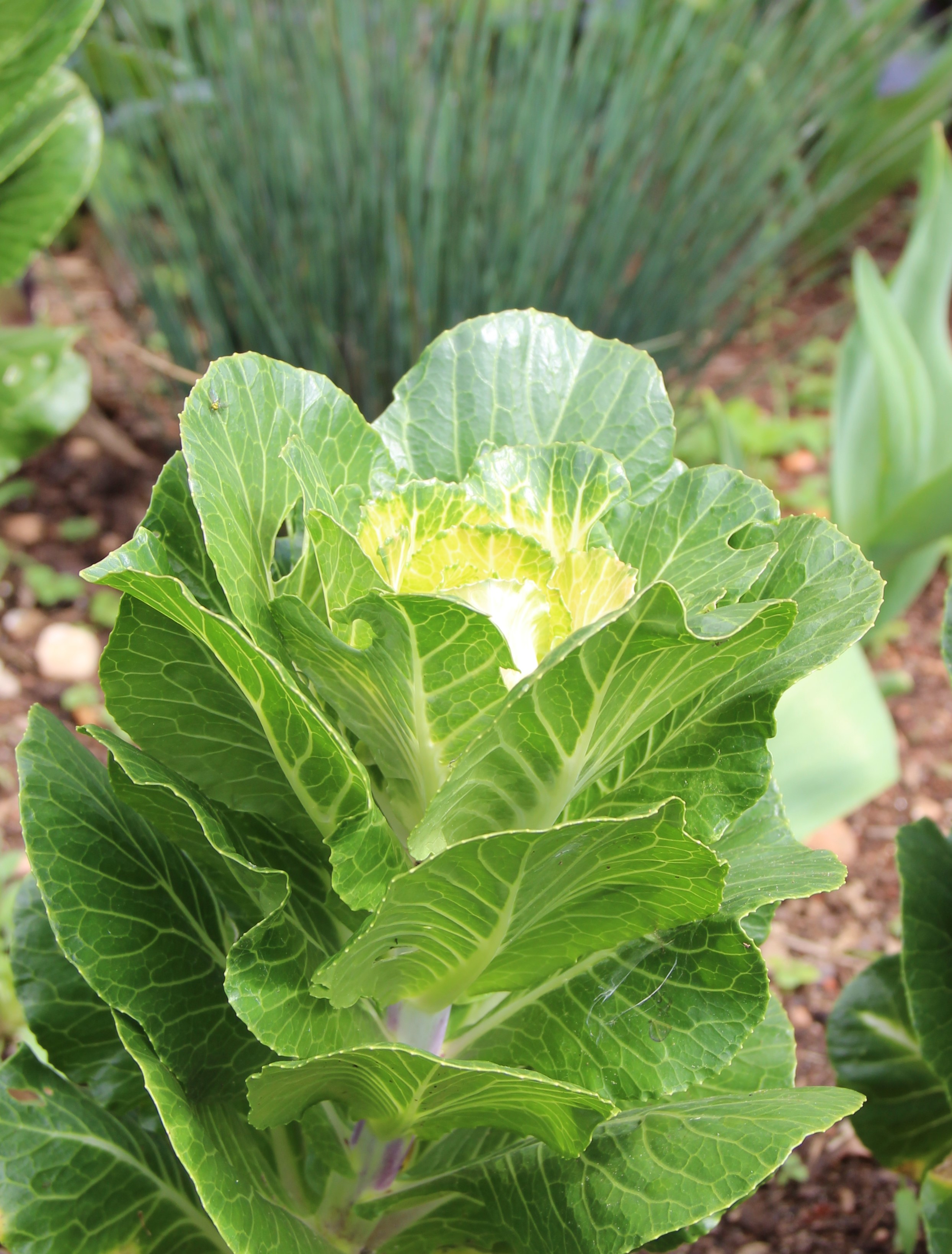
White ornamental kale: Try the Crane series for cut flower arrangements.
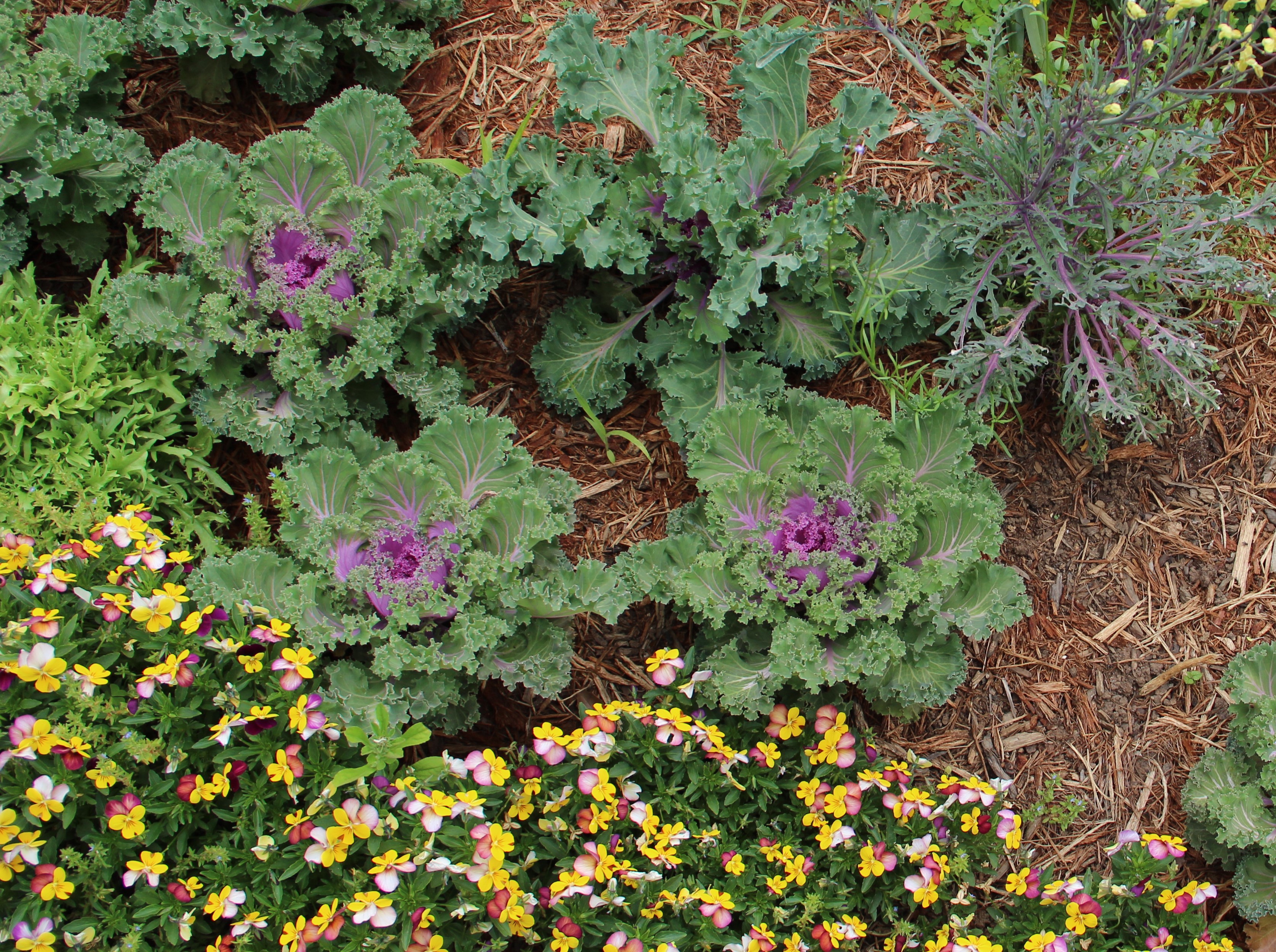
Upper right corner is Siberian Kale or Brassica napus (Pabularia Group) ‘Winter Red’
Giant Red Mustard produces a contrasting yellow flower.
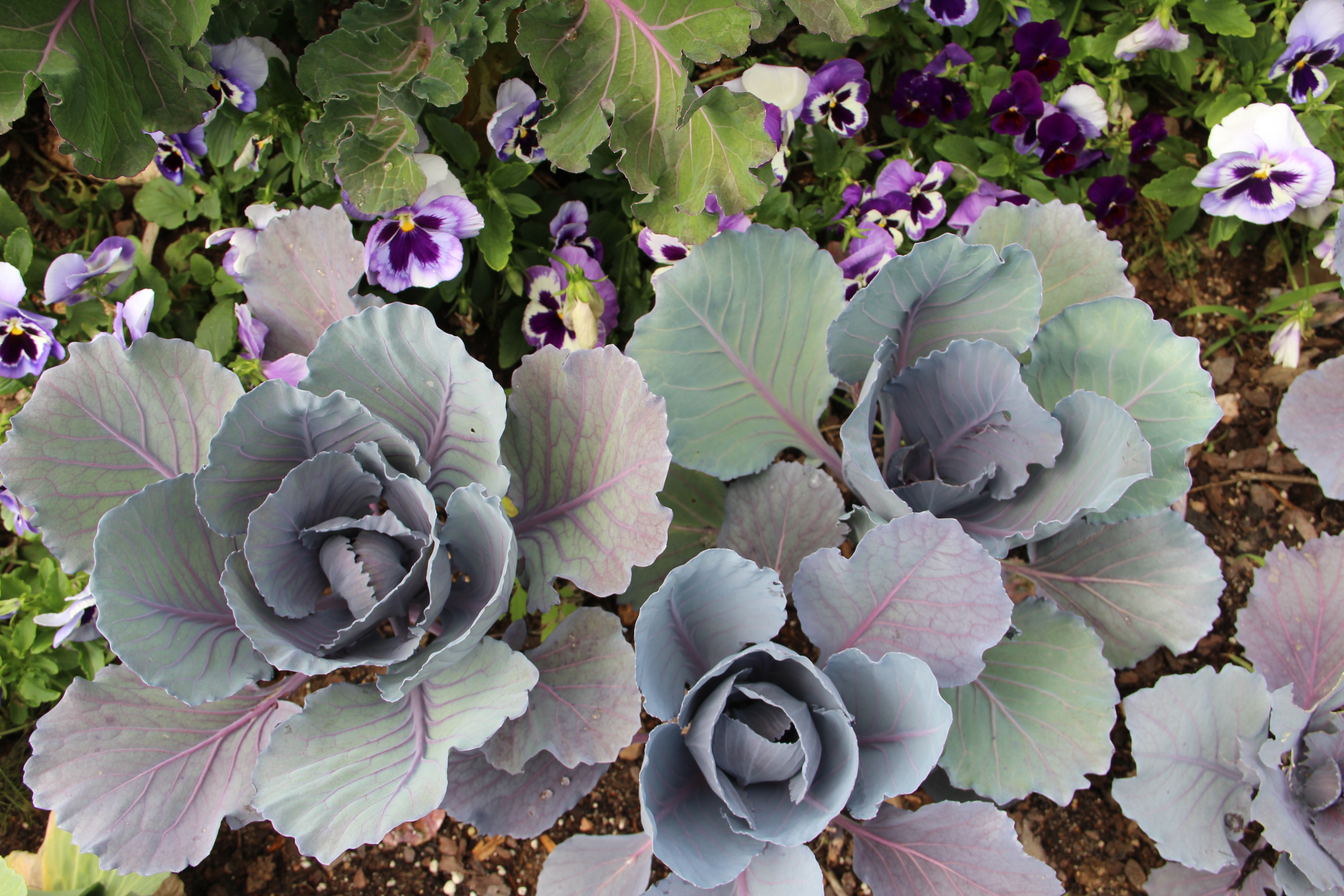
Cool season flowering plants like pansies and violas make great companion plants for brassicas.
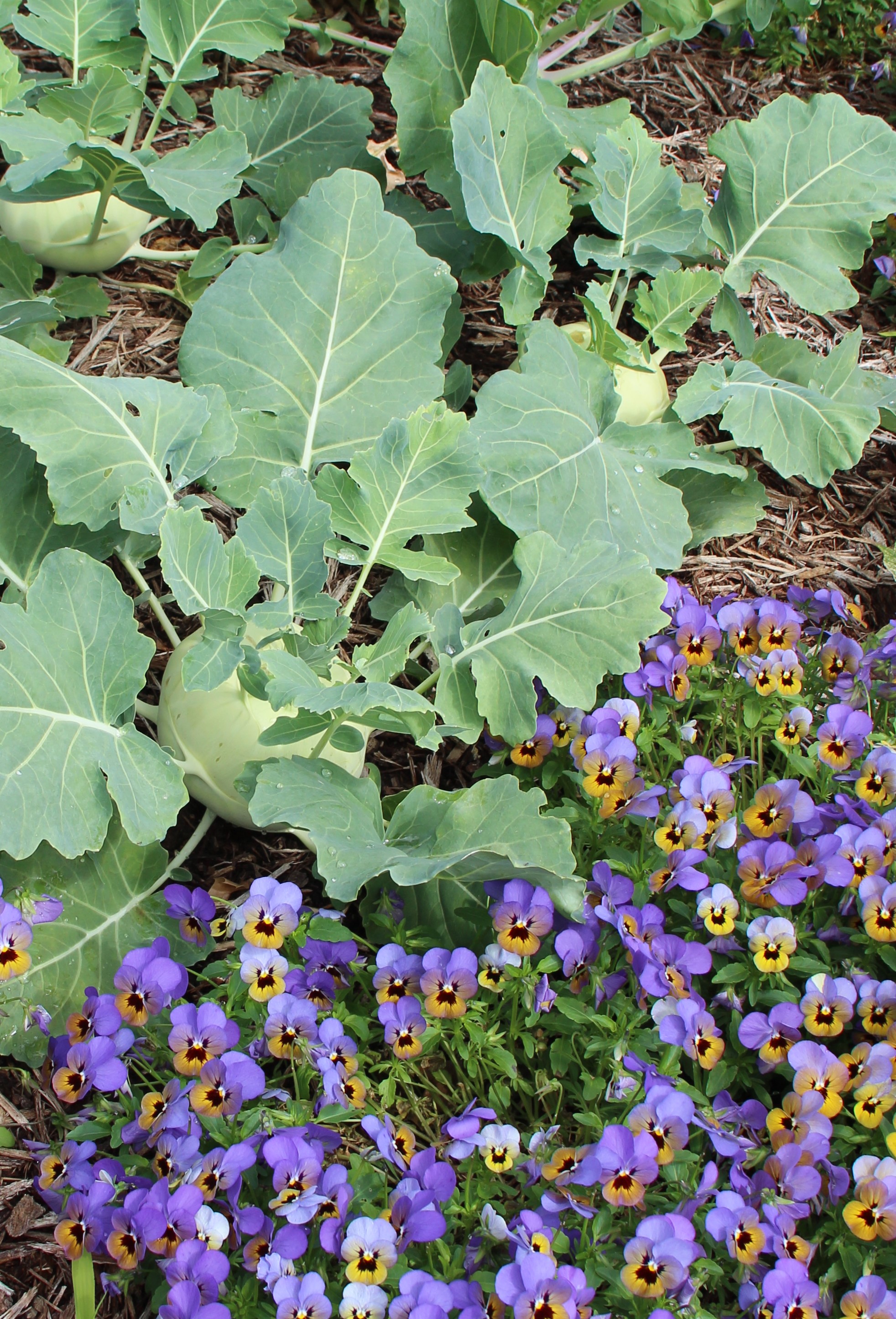
Kohlrabi paired with violas
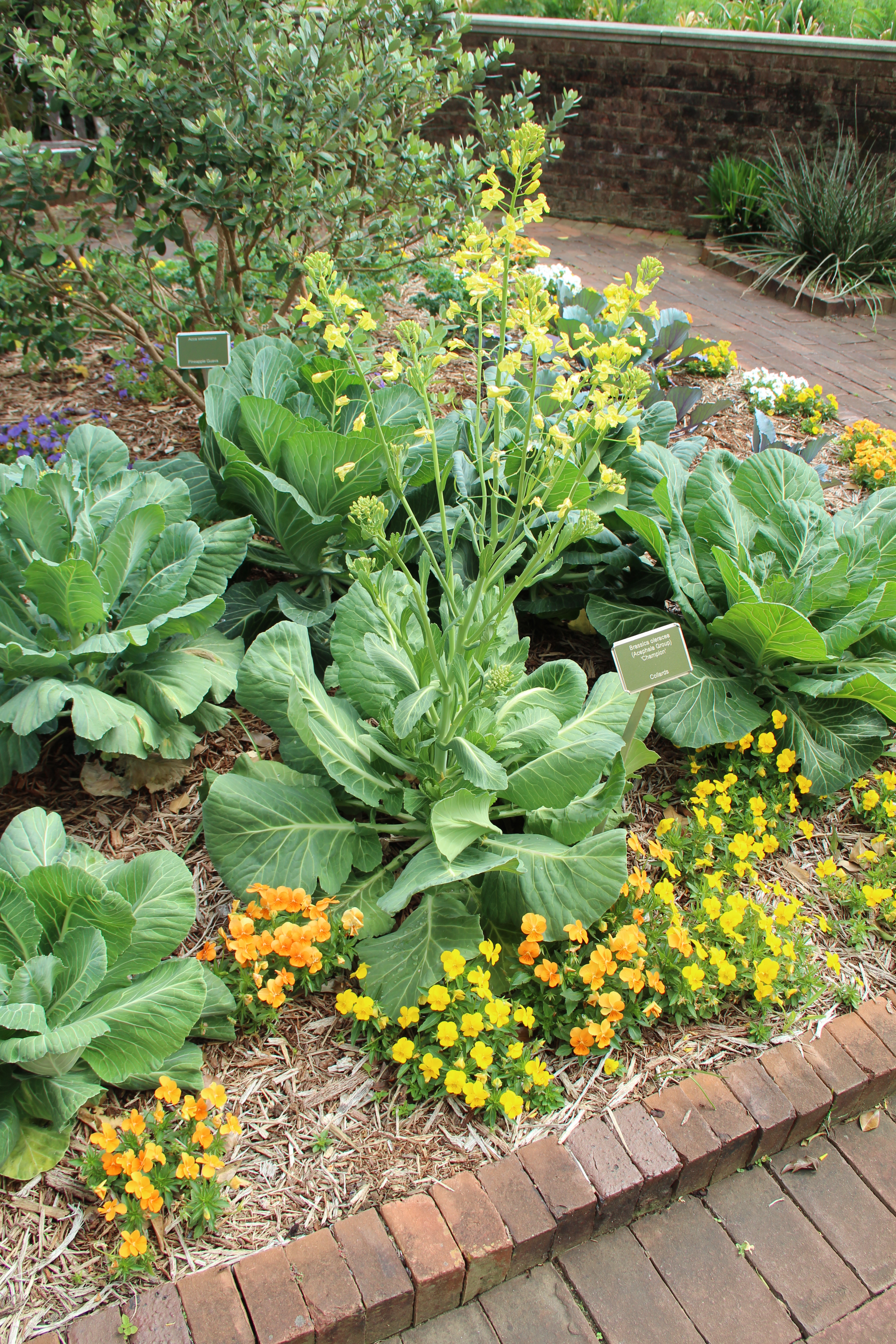
Collards take on more beauty as they flower here in yellow blooms.
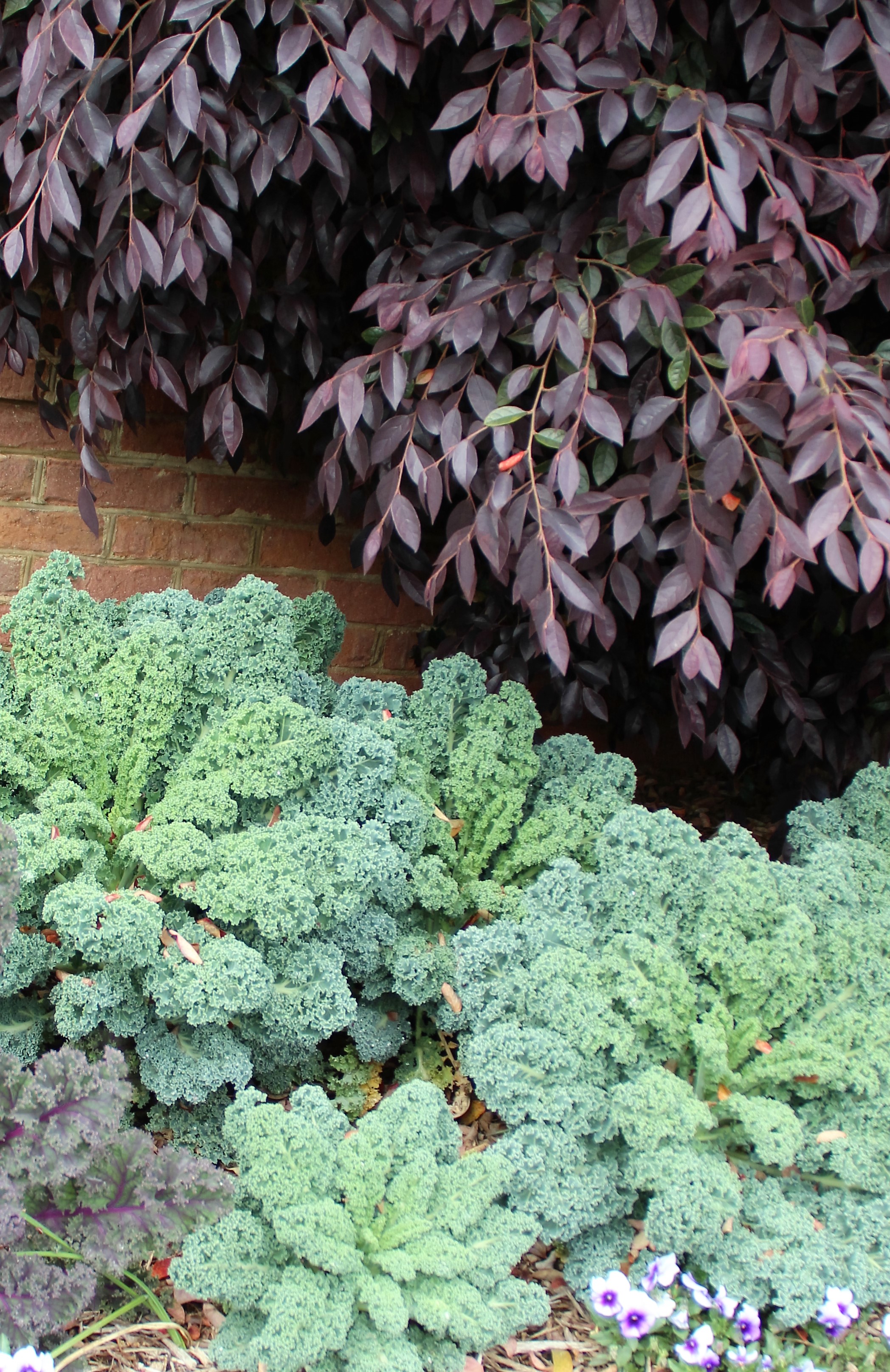
An planting of curly kale beneath a Chinese fringe tree
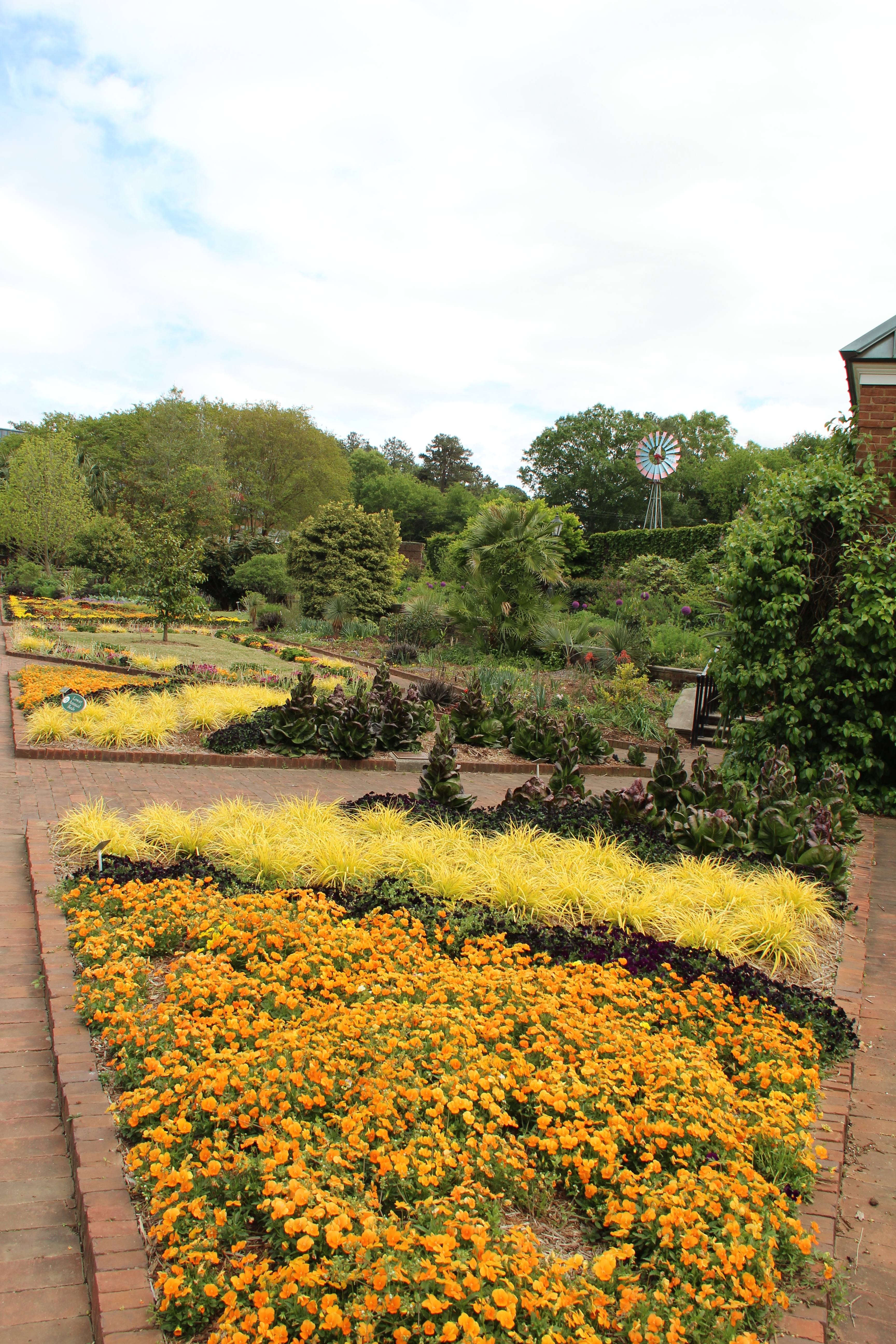
Visit Riverbanks Zoo & Botanical Gardens’ spring display in its 34,000-square-foot walled garden area.
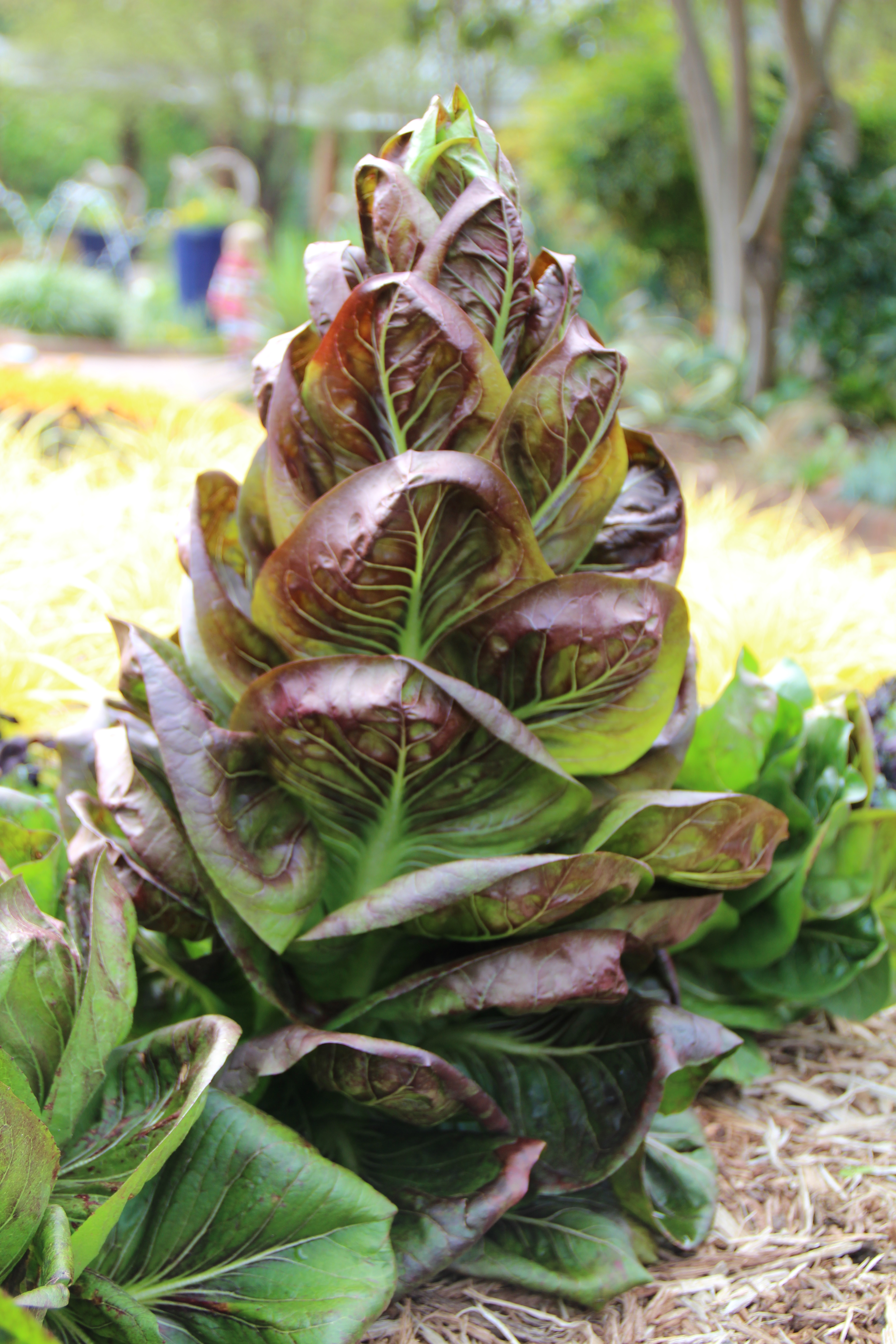
Radicchio Cichorium Intybus ‘Fiero’ (Not a brassica but a beautiful edible.)
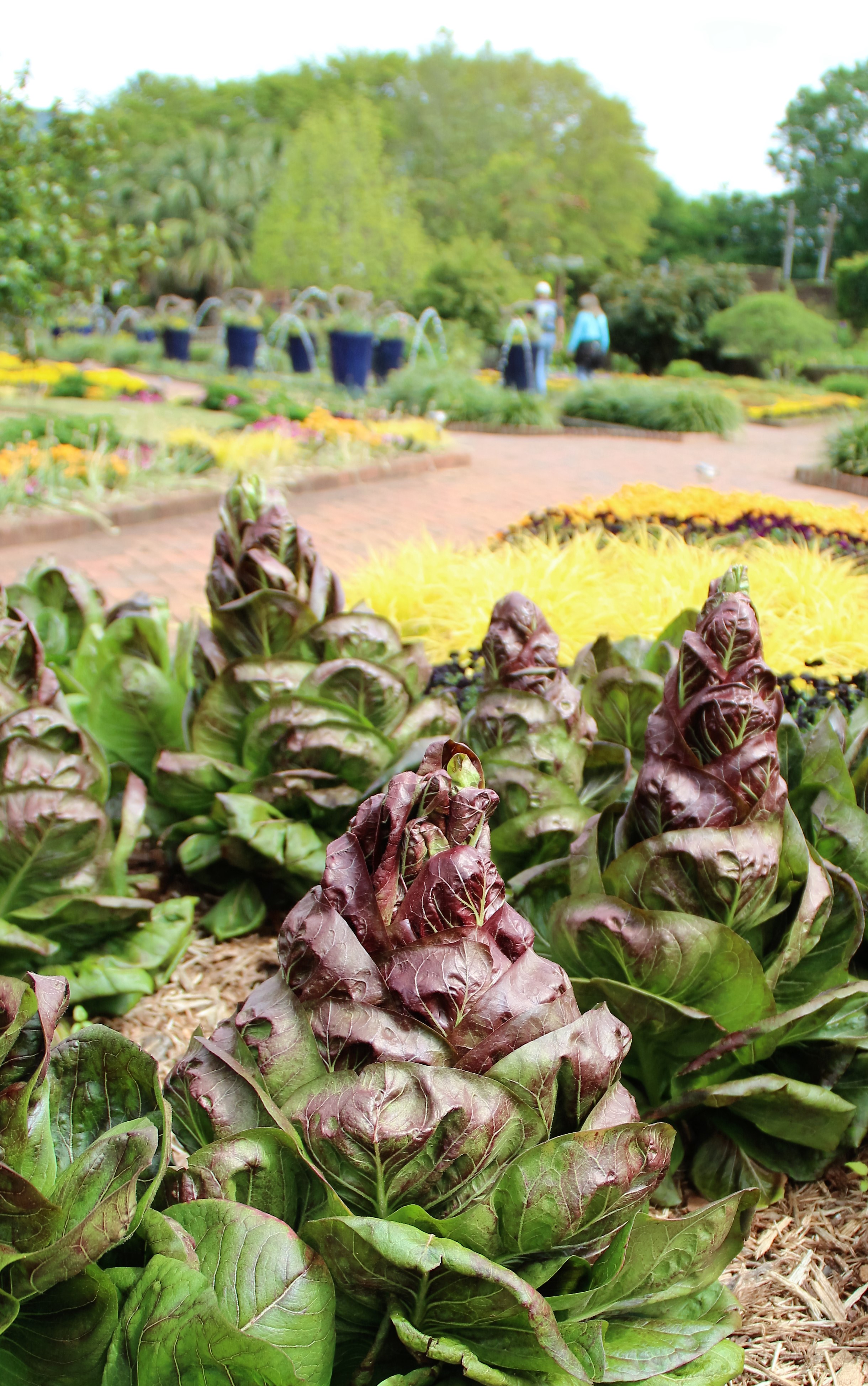
Radicchio add eye-catching conical shapes in the spring display garden.
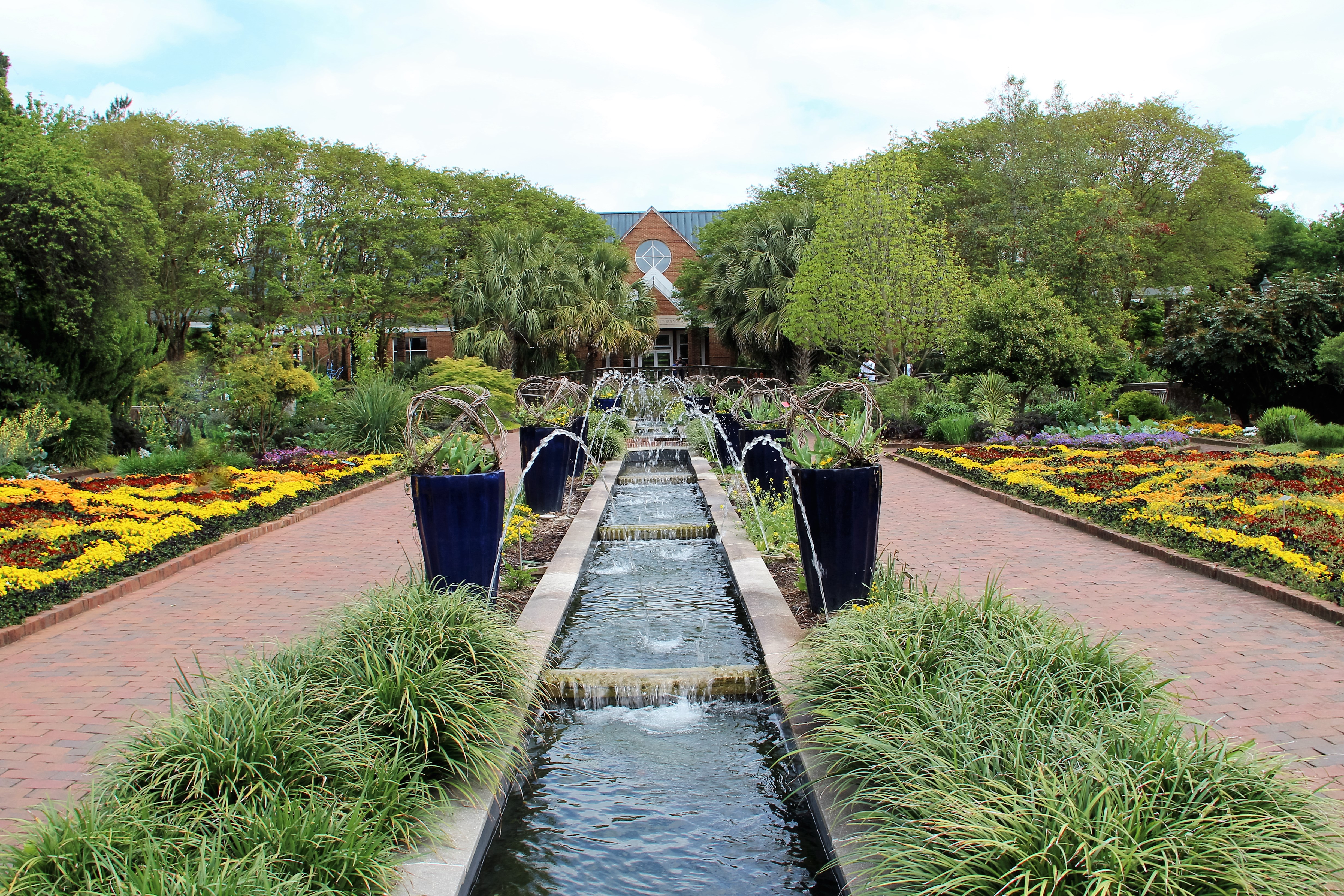
A 300-foot-long canal featuring cascades and pinwheel fountains serves as the focal point of the impressive spring display in the walled garden at Riverbanks Zoo & Botanical Garden.
by GardenLover | Apr 14, 2016 | Gardens to Drive, Happenings
A million blossoms transform Cincinnati into a floral capital this weekend
By Michael Leach
The Cincinnati Flower Show’s orchids, bird of paradise, jasmine, gardenia, zinnias and hundreds of other types of flowers delight visitors through Sunday (April 17) in park along the Ohio River downtown. 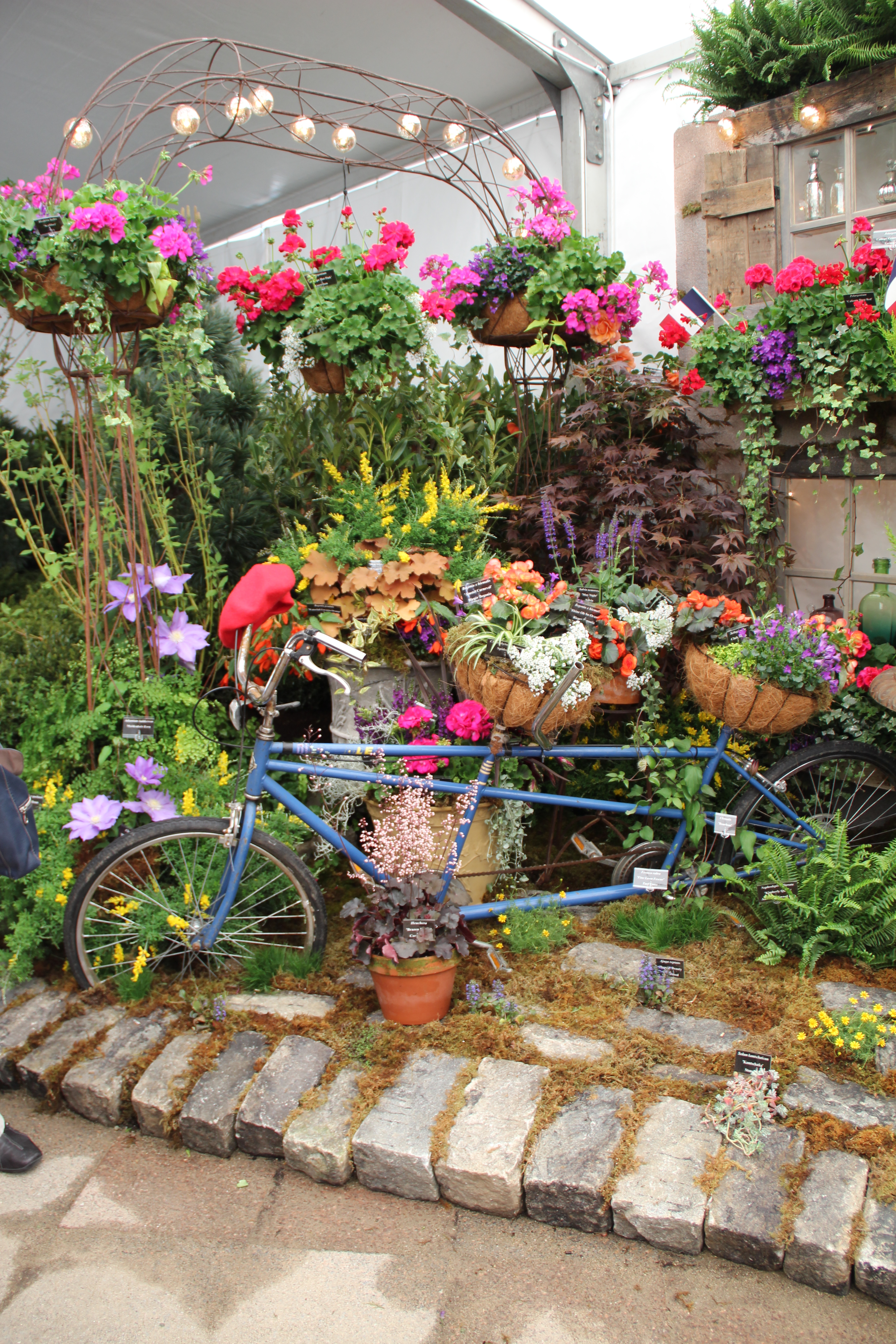
Not far from there, the Cincinnati Zoo and Botanical Garden amazes visitors with the splendor of 107,000 tulips in full bloom. Under the brilliant sun, the satiny blossoms glow like stained-glass flowers.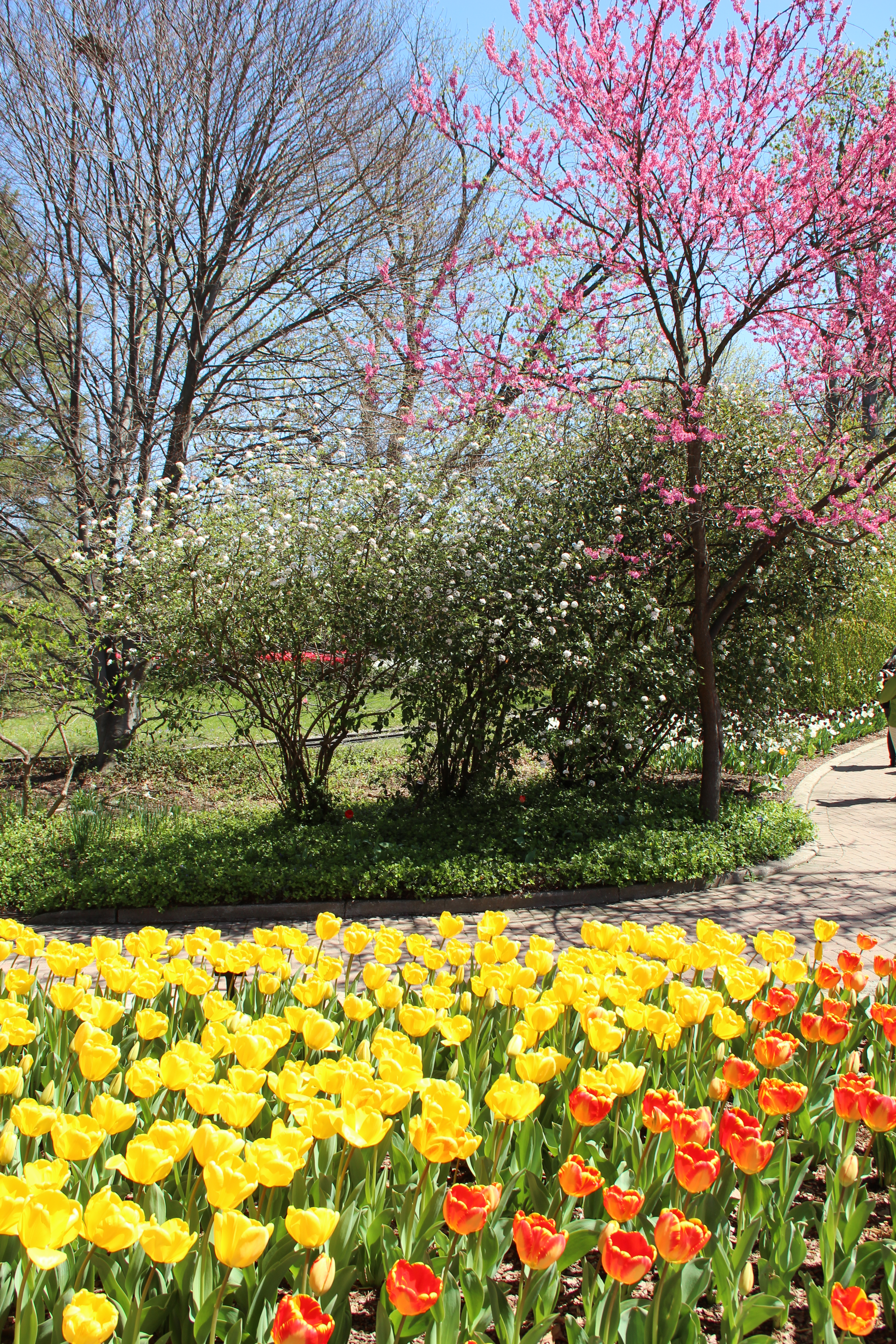
Blogmate Teresa Woodard, Diana Lockwood, The Columbus Dispatch garden writer and a Garden Writers Association newbie, and I were fortunate to attend a tour of both venues Wednesday with other GWA members. Part of the fun at the show was having Kevin O’Dell, of Kendrick & O’Dell Landscaping, as tour director. He’s one of the show’s organizers and long-time driving force.
At the zoo, Scott Beuerlein and Stephen Foltz pointed out highlights.
Our only regret? Lack of time. We never got to two other gardener must-sees, Spring Grove Cemetery and Krohn Conservatory. Maybe next year.



















